unsustainable
sustainability • ethics • climate • waste • renewables • ecology • poverty • equality

Tourism and Sustainability in the Alps – An In-Depth Guide
This overview of tourism and sustainability in the Alps looks at the environmental impact of visitors to central Europe, and beneficial projects and practices.
By Marina Helene Aschaber from Paulmarina.com
When we think of snow capped summits, green pastures with cows freely grazing on them, crystal clear mountain streams and cute little towns in the alps, we imagine a picture-perfect world in Europe. Yet, to attain sustainability in our times, can also be a challenge to those countries, which we consider a perfect example of preservation in this world.
This post examines various regions in the DACH countries, which include Germany (D for Deutschland), Austria and Switzerland (CH for Confoederatio Helvetica), and compares their challenges and the things that have been done so far. This topic will encompass sustainability as a broad topic, including environmental issues, with its social and economic effects.
Further Reading:
- Run the Alps
- Climate change and its impacts in the Alps
- Education for Sustainable Development in the Alps
- Why Sustainable Tourism is Important
Table of Contents
An Introduction to Sustainability in the Alps
Switzerland seems to be the pioneer in this field. Known as one of the most expensive countries to live in, Switzerland surely ticks the marks for all nature lovers. Its governance has been making efforts for decades towards a much more sustainable future .
The small country has one of the best train networks in Europe. Due to its geographical location, and the pace of political and economic development over the centuries, Switzerland has emerged as an innovative problem solver. Mountainous areas to the south of the country didn’t stop them from building out the train network. Tunnels were built not only for road traffic, but also to expand the train network, so to connect even the most remote areas to all major cities.
Train wagons are modern double-deckers, that are built for accessibility in mind. The SBB is always on time, services small stations regularly and the tickets are affordable, even for non-Swiss residents.
Thanks to this foresight and technical innovation, they have been able to build railways literally over mountains. Take for example the Berner Oberland, known as the Bernese highlands. Popularized by picture-perfect images and international movies, the area has been attracting hundred thousand visitors yearly. Especially the valley of 72 waterfalls, Lauterbrunnen, has been a magnet for seekers of stunning natural views.
The Effect of Tourism in the Alps
Visitors from all over the world flock to the summer and winter sports resorts, which include, the village of Lauterbrunnen, Wengen, Mürren and Gimmelwald. The villages, Wengen, Mürren and Gimmelwald are situated on a cliff formation at about 300 meters altitude above Lauterbrunnen in the valley.
Due to their unique location, they have been made accessible via a well-serviced local train and cable car network. These hyper touristic villages are completely car-free! The effects are very much visible, as one takes a relaxed stroll through the alpine boroughs.

CO2 pollution levels could have been exceedingly higher if tourists were to access the area with their private cars. Yet, today, instead, you don’t have to worry about traffic jams clogging the village centers. Everybody, even the most privileged, gets to travel to the upscale resort Wengen, the same way, via the iconic yellow and green Wengeneralpbahn cogwheel train .
This has given the locals a lot of fresh air to breathe, and scarce space in the alps has been utilized in the best way possible.
Despite that, visitor numbers have been increasing constantly over the years, to the delight of those who profit from tourism. Only steep nightly prices, higher than the regular Swiss average, have been deterring non-wealthy visitors from coming to the beautiful Lauterbrunnen valley . Nonetheless, hotels have been built and places have been turned into vacation rentals. The fear that these places turn into ghost villages is very real and locals that do not directly benefit from over tourism, take the brunt.
These places tend to be exceedingly busy, thanks to an excess of tourists during the peak season in July and August, as well as in December and January. But, it is plainly visible that younger locals have been moving out from the area because they cannot afford the living expenses in the region. While their parents built homes, it is now a thing of the past, as owning a house is considered a luxury at this point. A solution to this problem won’t manifest itself so soon.
This whole debate intensifies in the winter sports resorts as conservation activists point out the damage done to mountain slopes. Downhill skiing slopes are heavily prepared with artificial snow to tackle the ever warmer and late coming winters. Fortunately, the region has been blessed with large natural water reserves to feed the winter tourism needs.
Yet, the question remains if multinational skiing resorts will be able to justify themselves in a time when water is a commodity in various countries around the world.
Environmental Impacts
Yet, the glass is half full considering the authorities try to foster natural diversity. The alpine economy has long been relying on local animal farming. Small farms keep about 20 to 30 cows or sheep as well as other animals such as pigs, chicken, and ducks.
The manure that comes together is used as a liquified natural fertilizer on fields across the alps. Manure contains nitrogen which stimulates field growth, which in turn is cut to serve as feeding material for livestock throughout the year.
This is often promoted by farmer’s alliances as a “green” and sustainable way to fertilize fields, but it comes with a whole set of problems.
Liquid dung can pollute underground water reserves, and it contains phosphor, which in turn pollutes lakes and is a prime reason for the death of fish. Alpine plant diversity is also heavily affected by this practice, and therefore it is more and more evident that prestigious alpine meadows lack on variety. An increasing number of plants are added to the ever-growing list of endangered species.

Certain communities in the Lauterbrunnen valley have taken these concerns serious, and alpine pastures are not covered with liquid manure at certain heights. Although, this mainly accounted for high elevation areas across the alps, and so the fields in Mürren have been left alone and cows are moving about freely in the area.
The aim is to take nature conservation serious and to fight the dying of plant variety, so to preserve the unique eco sphere for future generations. Let’s hope this thought process will be adopted in the future in the valleys as well.
The Situation in Nature Reserves
Natural reserves in the alps serve as a place for animals and plants to thrive and live undisturbed. The Berchtesgaden national park in Germany, close to the Austrian border, makes for a fine example.
The park was designated a UNESCO biosphere reserve in 1990, which means it’s a learning place for sustainable development. Its goal is to not only protect and preserve, but to also observe and learn from. Still, the park has also been welcoming visitors and therefore tourism has been thriving in this stunning region.
The natural harmony is only threatened by over tourism during peak travel seasons, which at the same time helps to finance the conservation of the area.

Another national park in this part of the world is the national park Hohetauern in Austria. This park welcomes visitors who come to see Austria’s highest mountain, the Großglockner.
The Großglockner high alpine road takes visitors to a viewing platform with a view of the diminishing Pasterze glacier. Park maintenance has been financed with the expensive toll road fees, and so the authorities hope to bring people closer to nature and to educate them better about our natural surrounding.
Time alone will tell if this whole endeavor is successful.

The Effect of Skiing Tourism
Many Austrians are tied to the local tourism industry, directly or indirectly, and this conflict of interest has been voiced multiple times over the decades. Glaciers have been receding, but glacier skiing tourism is unfortunately still a thing in 2023. Traffic jams have only increased in the alps, where space is a commodity and where locals can’t afford to live anymore.
One prime example is the ski resort of Kitzbühel in the Tyrol alps. The upscale ski resort has been a place where jet-setters invest in properties.
This has been driving the real estate prices up. The result is a lack of affordable housing in this particular rural area in Austria, which is considered one of the most expensive per square meter in Austria. There is no end to this, as the municipalities’ list has been filling up with locals seeking a small apartment to live in.
The current waiting time to get a chance to get affordable housing is 8 years and affordable housing means a 65 m2 flat priced at EUR 400000. Solving this conundrum will take the state a lot of effort, especially with the soaring inflation rates in Austria.

The flip side is that the Austrian state administration has been working on local waste management and reduction. Separating waste has long been ingrained and the tourism industry, in conjunction with waste management, has been managed well enough so far.
Private people create compost with organic waste, which is then reused in their gardens. But also special deals are created in towns with farmers who collect organic waste, which is then turned into dry and rich soil. So, every time you see balcony flowers at a hotel in Austria, you will know that the flowers get to feed on locally made humus manure.
The Austrian government has also been promoting renovations of buildings, and it has been offering subsidies for isolation upgrades and for getting renewable energy-efficient sources, such as solar powdered photovoltaic panels. District heating has been implemented and public spas and hotels are heated with leftover heat from factories. This approach shall help take sustainability to the next level.
The Future of Tourism and Sustainability in the Alps
In conclusion, nature, and people should be able to coexist in the alps. Efforts have been made at the governance and on the individuals’ level. Yet, the question remains if it has been enough to tackle all angles and social economical, as well as environmental, pain points.
The hope is that problems are addressed with permanent solutions, and that they should not be transferred to other areas in the world, or that they are ignored or swept under the rug. Sensible education and case by case situations should be studied, and talking openly about issues should be the norm.
Though topics, such as privatization of alpine waters and infrastructure management, will bring up more questions and debates. Yet, the European alps are moving towards a more sustainable and equitable future.
Share this article
Related articles:.
- Technoversal Leadership for Biodiversity and Climate
- Sustainable Fabric: A Guide to Environmental Impacts
- What Is Soil? A Close Look at the Ground Beneath our Food
- Prevalence of Regenerative Agriculture (RA) Across the World
- Sailors for Sustainability: Travelling the World Ethically
- Britain's Temperate Rainforest: Fragile and Forgotten Places
hosted by greengeeks
CONTACT Authors Submissions
In the spirit of reconciliation Unsustainable Magazine acknowledges the Traditional Custodians of country throughout Australia and their connections to land, sea and community. We pay our respect to the Elders past and present and extend that respect to all Aboriginal and Torres Strait Islander peoples today.
© unsustainable 2024
- Tools and Resources
- Customer Services
- Climate and Coasts
- Climate Impact: Extreme Events
- Climate Impact: Human Health
- Climate Impact: Managed Ecosystems and Agriculture
- Climate Impact: Marine Ecosystems
- Climate Impact: Resource Depletion
- Climate Impact: Sea Level Rise
- Climate Impact: Terrestrial Ecosystems
- Climate of Africa
- Climate of the Baltic Sea Region
- Climate of the European Alps
- Climate of the Tibetan Plateau
- Climate Systems and Climate Dynamics
- Climate Systems and Climate Dynamics: Biogeochemistry
- Climate Systems and Climate Dynamics: Theoretical Foundations
- Communication
- Development and Sustainability
- Downscaling
- Forecasting
- Future Climate Change Scenarios
- Geoengineering
- History of Climate Science
- Hydrological Cycle
- Management of Technology and Mitigation
- Past Climates
- Policy, Politics, and Governance
- Psychology and Sociology
- Risk Management and Adaptation
- Share This Facebook LinkedIn Twitter
Article contents
Opportunities and drawbacks for alpine tourism under climate change.
- Franz Prettenthaler Franz Prettenthaler JOANNEUM RESEARCH
- and Christoph Neger Christoph Neger UNAM
- https://doi.org/10.1093/acrefore/9780190228620.013.829
- Published online: 24 May 2023
Alpine tourism both contributes to the generation of greenhouse gases and suffers the consequences of climate change. This has been apparent in many destinations since the late 20th century and will exacerbate further in the future. It will particularly affect the winter season, which relies heavily on snow-based activities. Since the early 21st century, these effects have largely been dealt with by the use of artificial snowmaking, which will remain an important tool for alpine tourism destinations, despite increasing efforts and costs. The effects of climate change will not be ubiquitous but, rather, will impact low-lying and less prepared resorts first, whereas those in higher elevations and with the necessary infrastructure might even benefit in the short term by shifts in tourist flows away from less attractive sites. Long term, however, climate change is a serious issue for all alpine winter sports destinations, particularly because customers might lose interest in winter activities.
Regarding summer tourism, the future looks brighter, and many authors even expect an increase in tourism as other areas such as the Mediterranean become less attractive. Yet other researchers are skeptical of setting too high hopes in these projections because the situation is much more complex than assumed in many models and scenarios, considering for instance the distinct temperature preferences of visitors practicing different tourism activities. The uncertainties regarding the future of alpine tourism are even greater when climate policy, directed toward the mitigation of climate change, is taken into account as well. In this regard, to date there have been no significant impacts, but this might change under future, more extreme climatic conditions, which could lead to bolder policy actions. Moreover, consumers might change their travel preferences, favoring less carbon-intensive alternatives.
- carbon footprint
- climate-friendly tourism
- climate models
- climate policy
- sustainable mobility
- winter tourism
You do not currently have access to this article
Please login to access the full content.
Access to the full content requires a subscription
Printed from Oxford Research Encyclopedias, Climate Science. Under the terms of the licence agreement, an individual user may print out a single article for personal use (for details see Privacy Policy and Legal Notice).
date: 18 April 2024
- Cookie Policy
- Privacy Policy
- Legal Notice
- Accessibility
- [66.249.64.20|195.216.135.184]
- 195.216.135.184
Character limit 500 /500
News from the Columbia Climate School
A Tale of Two Alpine Towns: Study Highlights How Different Tourism Strategies Influence Resilience
Kelcie Walther
The towns of Vent and Obergurgl are nestled in the Ötz Valley in the Tyrol region of Austria, just north of the Italian border . They sit on either end of the mountain valley, framed by jagged peaks and lush meadows. They appear quite similar, quintessentially picturesque mountain villages with chalets and steep roof peaks, but Vent and Obergurgl are in starkly different economic and social situations. Though they were born of the same land and history, a new study finds that one of these towns is much more likely to survive changing times than the other.

Until the 19th century, the populations of most alpine mountain villages sustained themselves through subsistence farming. But with the industrial revolution and global modernization, this traditional way of life became unsustainable for many communities and was largely replaced by tourism. Vent and Obergurgl employed distinct strategies as they transitioned to tourism-based economies , and now have contrasting levels of community resilience.
The concept of community resilience borrows metrics from ecology, and measures how well a system can maintain its function after a disturbance. This study, from the University of Innsbruck in Austria, assessed resilience in Vent and Obergurgl in a unique, longitudinal study that combined economic and social data with detailed interviews with townspeople.

“With the Alpine Research Centre Obergurgl , the University of Innsbruck has been actively researching this area for a long time,” said lead author Rike Stotten in an interview with GlacierHub. “The Upper Ötz Valley was intensively investigated in a project in the 1970s that focused on ecological aspects but also included aspects of social change, and we got the idea to build on these experiences.”
Researchers found that in Vent, where residents were reluctant to alter the natural landscape and engage in heavy development, a more resilient society has flourished. Rather than focusing solely on being a winter tourist destination, like Obergurgl, Vent positioned itself as a year-round mountaineering destination.
Vent has seen continued cooperation between farmers and the tourism industry. While farmers do not produce enough food to completely supply the hotels, some of Vent’s hoteliers feature local produce and meat products on their menus. Many farmers have invested in hotels and Vent’s chair lift company, and the tourism sector sees maintaining the town’s farms as a critical part of its appeal to tourists. One farm in Vent has started hosting tourists in farm-stays, where visitors can take carriage rides and experience other farm activities. The research team also noted that many regional cultural traditions have endured in Vent, and that the Tyrolean dialect is still spoken by many.

Obergurgl has continued to focus on being a destination for winter tourism, and is home to five chairlifts to serve its ski slopes. The village has made little effort to encourage summer tourism, and food production is not of economic importance. Much of the population no longer lives in Obergurgl year round, leaving many businesses shuttered and few services available throughout summer months. Researchers noted that during the summer even the police station in Obergurgl was closed. As a result of the focus on the economic success of the winter season in the town, social and cultural resilience has suffered. The local dialect is spoken with less frequency, and church attendance, of great social importance in both Vent and Obergurgl, has waned.

Residents in Vent have embraced moves toward conservation and sustainability, but those in Obergurgl have been less willing to prioritize the environment. In Vent, residents have been hesitant to expand tourist bike paths that could negatively impact local fauna. In Obergurgl, the influx of single-family vehicles during the ski season has led to congestion on local roads and necessitated the construction of multi-level parking garages. Obergurgl’s hoteliers have resisted making the town center a car-free zone. Researchers noted that while both towns are experiencing the consequences of climate change, there is virtually no public discourse about global warming in Obergurgl.
“The high elevation of both villages guarantees low temperatures so that at least snow cover with artificial snow will be possible in the upcoming years of climate change,” explained Stotten. “The glacier melt will cause major problems once the glaciers are gone, as this will lead to water shortages in summer.”
Life is sure to change in both of these small mountain towns in the coming years, and Vent shows how diversity of industry and prioritization of the preservation of the natural world can allow a community to more effectively weather the storms to come.
Related Posts

A Virtual Reality Film That Makes the Climate Crisis Feel “Real”

Dam Removal Spurs the Return of Salmon—and a Local Tribe’s Hopes of Sustainable Fishing

A Grassroots Organization Stops Exploratory Drilling in Chile

Celebrate over 50 years of Earth Day with us all month long! Visit our Earth Day website for ideas, resources, and inspiration.
Really interesting read Kelcie!
Good to see systematic research on the different results of long-term decisions. Would be interesting to follow up in a few years to see whether either of the two towns changes their approach as a result.
Will it be enough? That’s always the question as we find ourselves beginning to be overwhelmed by our way of life.
Get the Columbia Climate School Newsletter →

Seduced and abandoned: tourism and climate change in the Alps
Rising temperatures have contributed to the decline of hundreds of ski resorts on Italian slopes
D eserted ski lifts and ruined hotels are some of the relics of a tourist industry that first seduced and then abandoned the Alps, along with cement, steel cables, paved car parks and deforested slopes.
From Piedmont to Friuli, there are hundreds of abandoned ski resorts in Italy. Researchers counted 186 in 2011, a number that is likely to have grown since.
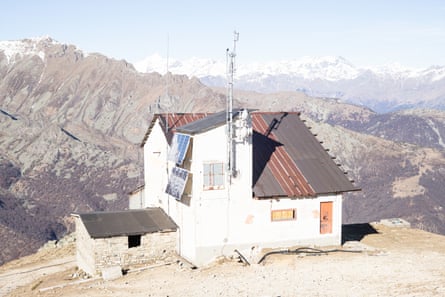
Warmer winters and shorter ski seasons combined with bad investments and high running costs have contributed to the slow death of small- and mid-sized ski resorts.
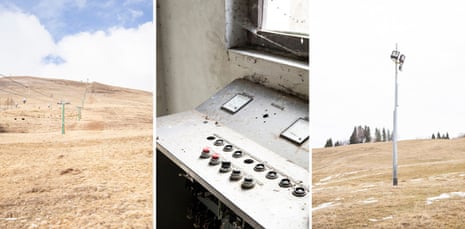
The past four years have been the world’s hottest on record, with mountainous areas particularly susceptible to climate change: every 1C of temperature increase on the plains corresponds to a 2C rise in the Alps.
Academics from ETH Zürich have forecast an increase of between 2.5C and 4.5C for Switzerland by 2050, and a similar situation is expected across the rest of the Alps.

With forecasts like these, the future of ski resorts at lower altitudes grows less certain, and those that do survive are forced to rely increasingly on artificial snow.
“This past ski season, until February, the majority of ski resorts worked almost exclusively thanks to artificial snow,” said Francesco Pastorelli, of the International Commission for the Protection of the Alps ( Cipra ). “This has obvious consequences on the environment, and on the economic sustainability of ski resorts.”

The Alps’ spectacular panoramas have changed, with white tongues of artificial snow now stretching through yellow meadows. Skiers queue to descend slopes that are increasingly frozen or rotten.
Few of them realise how expensive it is to produce artificial snow, which costs €3-5 per cubic metre. Italy has about 2,500 miles (4,000km) of ski slopes, and the bill for covering them with fake snow adds up to €500m (£420m) every season.
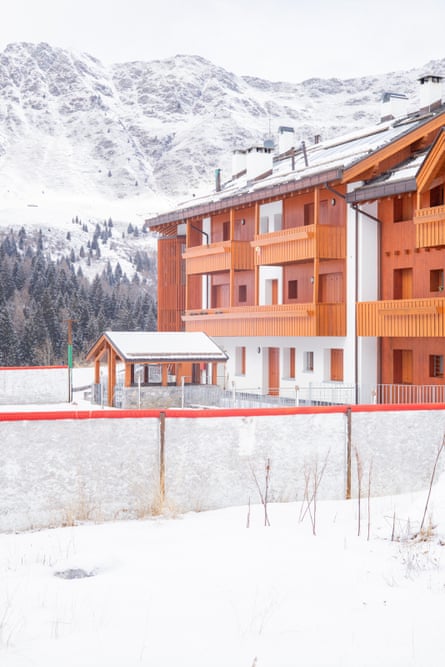
But although tourists and investors have fled from many areas, there are still people who have no intention of leaving.
Renzo Pinard owns the Belvedere hotel in Pian del Frais, a ski resort in Piedmont. In recent years there has not been enough snow for the resort to open, and tourists who used to visit have started holidaying elsewhere. Homes in the town are plastered with For Sale signs.
Pinard is one of the town’s last inhabitants. “This is my land, it is the story of my family,” he said. “I will never leave. Places like Pian del Frais can survive but we need to change our mind and find alternatives to alpine skiing.”
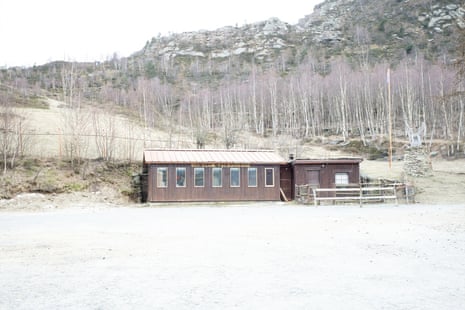
- The Guardian picture essay
- Climate crisis
Most viewed
We use cookies to analyse how visitors use our website and to help us provide the best possible experience for users. View our Cookie Policy . ( I accept )
Posted on March, 26 2006

Related links
- WWWF Italy's website (English content also available)
You are using an outdated browser. Please upgrade your browser to improve your experience.

Game over: The future of skiing and winter tourism
- Foresight Staff
- February 18, 2023
by Francesco Bassetti and Davide Michielin
Recent snowfall across Europe should not give way to false hope: Europe is still facing one of the warmest winters since records began . The sparse snowfall has seen grass blanketing the continent’s central mountains, causing concern for the ski industry and winter sports organisers, as well as bringing climate change to the forefront of discussions on the future of skiing.
The chopping and changing of the Alpine Ski World Cup’s calendar is emblematic of the current snow-scarce winter season. In October, the events scheduled in Zermatt (Switzerland) and in Cervinia (Italy) were cancelled due to lack of snow. The following stage, which was originally planned in Zürs (Austria) on November 13, met the same fate. The use of snowmaking machines saved others, such as the surreal slalom trial of January 4 in Garmisch (Germany) that took place on a thin strip of man-made snow surrounded by bright green pastures. As things stand, the upcoming stage in the same Bavarian location, originally scheduled for January 28, has also been moved.
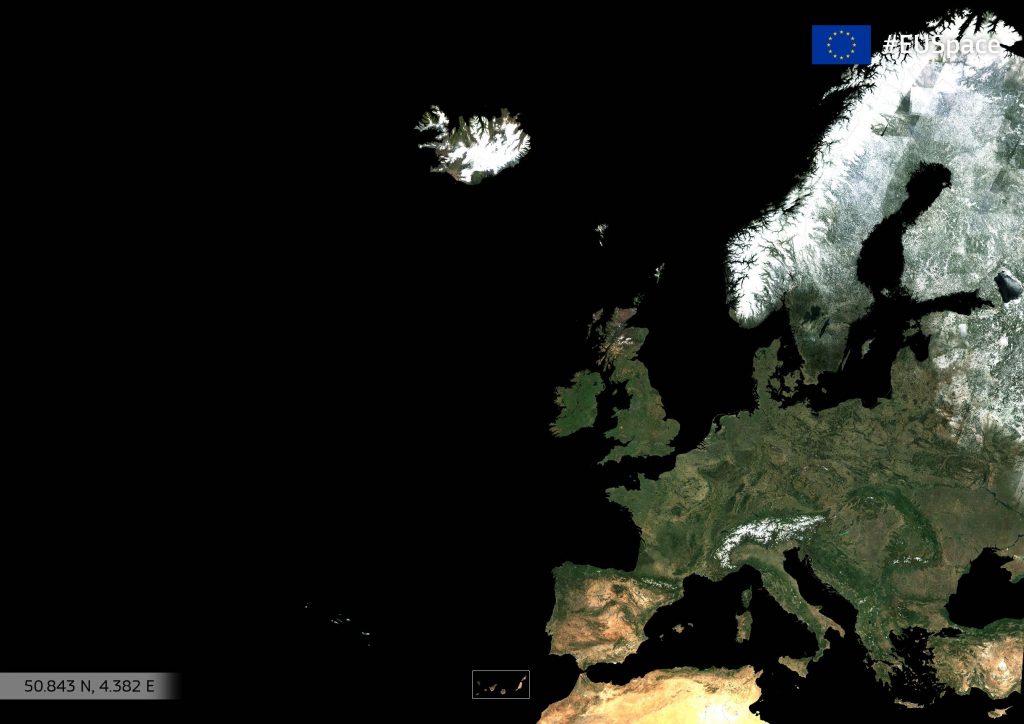
The Alps’ snow cover predictions
It’s not just a matter of professional sporting events. Increasing temperatures and snow-scarce winter seasons challenge the winter tourism industry, one of the most weather-sensitive economic sectors.
Satellite images have revealed dirty brown hillsides around what should be pristine, white snow-covered ski resorts as record-breaking January heat spread all over Europe. However, climate change is expected to have more material impacts on European Alpine tourism than in other areas of the world.
The Alpine region is going to be as much as three times more impacted by global warming than the average for the Northern hemisphere. According to a study based on tree-ring dating , the recent waning snowpack in the Alps is unprecedented in the last six centuries.
Mild weather has left many locations that would normally be covered in snow at this time of year bare, and winter sports resorts are fearing for the future. Data from the Institute for Snow and Avalanche Research at Davos shows that, by the end of the century, snow may decline between 30 percent and 70 percent in the Alps, affecting even ski resorts that have so far been safe. An estimate that is, by and large, similar for expected glacier mass loss during the same period.
According to EURAC scientists , if climate change is not mitigated, temperatures will increase leading to a change in precipitation patterns, possibly leading to more winter precipitation across the Alps and less in the spring and autumn. However, at lower elevations this precipitation will come in the form of rain instead of snow whereas at higher altitudes, an increase in precipitation might lead to more snowfall in the central winter period. That said, the snow cover season will be shorter because of rising temperatures: snow will accumulate later in fall and melt earlier and faster in spring.
Reports on the current state of affairs
The grim outlook for mountain tourism has pushed the Bank of Italy to face the problem. In the report “ Climate change and winter tourism: evidence from Italy ”, published in December 2022, the Italian reserve bank analysed 20 years of weather conditions and tourist flows in 39 Alpine ski resorts.
According to consensus projections on climate variables, the experts estimate that in the coming years the impact of climate change on ski passes and overnight stays could be significant, especially at lower altitudes. Moreover, snowmaking might not be enough to sustain tourism flows: while man-made snow can reduce the financial losses from occasional instances of snow-deficient winters, it cannot protect against systemic long-term trends towards warmer winters.
In this context, adaptation strategies based on diversification of mountain activities and revenues are crucial. Considering the potential of a wider set of amenities to sustain touristic flows, investments could be made to reduce the dependence of mountain economy on snow conditions: for example, by enhancing engagement in year-round tourism, stimulating and promoting summer tourism, but also activities and winter weather independent entertainments such as winter trail running races, congress, educational and health events.
Since 2013 the Italian environmental NGO Legambiente publishes a yearly report on how ski resorts are transitioning towards no-snow models across the country. The objective is to advocate for a shift from snow tourism in the Italian Alps and Apennines as climate change brings increasingly warmer and snow free winters.
In the 2022 Report authors renewed their call for a transformation from “Mountains, from mere places of consumption […] into venues for innovative and sustainable experiences.”
The report goes on to highlight 10 virtuous examples across Italy, all of which have in some way brought together sustainability and economic benefits for mountain communities. The initiatives range from promoting year-long tourism – instead of overreliance on the winter season – to promoting alternative activities such as snow shoeing, ski touring, Nordic skiing, or even trekking and mountain biking.
Yet the report also reveals how regional authorities across the Italian Alps and Apennines continue to pour significant portions of their development budgets into further expanding ski lifts and alpine skiing infrastructure. Even in regions that have not historically relied on skiing, such as the Marche region in central Italy a staggering 65 million euros have been allocated to developing ski infrastructure in the Sibillini Mountains.
A situation that is also present in Switzerland where two-thirds of the Swiss cable car companies depend on public money for their survival according to a study by the University of Applied Sciences at Lucerne.
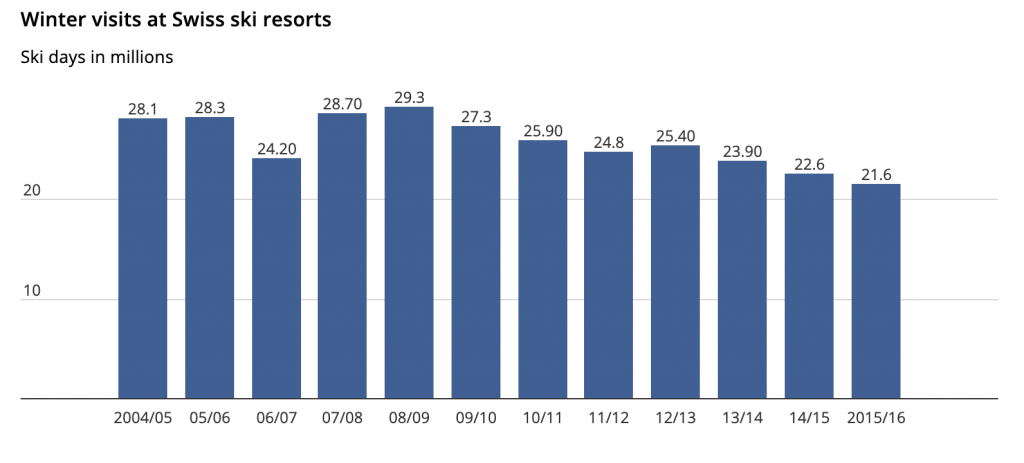
Christophe Clivaz professor at the Institute of Geography and Sustainability at the University of Lausanne , and co-author of the book “Winter Tourism: Climate Challenge”, is opposed to this heavy investment approach. “We should focus public subsidies on certain ski areas and help other resorts divest themselves to find alternatives to skiing,” he explains in an in depth interview with swissinfo.ch .
“There isn’t any one activity that single-handedly generates the same income as skiing. But by working on a wide range of diversified alternatives, we can do it. For example, mountain biking and hiking have enormous potential for development in Switzerland. Of course, they do not generate the same turnover as skiing, but the basic investment is also much lower,” Clivaz continues.
A new skin for winter tourism
“The prospects for traditional winter tourism are not good. The decrease in snowfall is one of many issues. For instance, we must consider the permanence of a sufficiently thick layer of snow for at least 100 days a year or, at least, in certain periods of the year such as winter holidays,” says Andrea Bigano, researcher of Economic analysis of Climate Impacts and Policy Division of CMCC .
In the Alps, the only ski resorts likely to survive are the ones found 1,800 metres above sea level. Furthermore, the use of man-made snow will not change the long term situation. “The snowmaking time is up because it requires a huge amount of water and energy. The first limit, in particular, is linked to the growing scarcity of water and therefore to competition with other uses,” adds Bigano, suggesting that next year’s winter tourism must change skin.
Distributing the tourism flows throughout the whole year would be a win-win solution, laying the foundations for a less intensive exploitation of Alps. “Winter tourism is the golden goose of mountain places but it isn’t the only one. Due to Covid restrictions, in the last two years people have reevaluated summer stays. Moreover, the spread of remote working changed the habits of several second-home owners: they spent more time, in different periods, in the mountains than before,” says Bigano.
These different ways of living the mountains requires a change in people’s attitudes and expectations but also adaptation strategies. “Climate change will affect mountains all year round, with impacts on biodiversity, water resources, forests (and hence on forest fire risk). Thus, the transition towards a diversified use of the mountains throughout the year must be coupled with appropriate risk prevention measures and adaptation strategies,” concludes Bigano.
Putting forth solutions
Local operators also recognise this reality. “Mass ski tourism is a thing of the past and we can’t keep fooling ourselves into thinking that it will continue to be as it was,” says mountain guide and ski instructor Michele Comi, who has spent the better part of his life in the mountains, whether this be for skiing, climbing or trekking.
Comi believes that although the local economies of many mountain communities in the Alps have become reliant on skiing there are ways around this. In 2004, Comi became one of the founders of MelloBloccco, a music and climbing festival held in the majestic Val di Mello in the Italian Alps which soon gained global notoriety.
Bringing this event to a small mountain community led to the area becoming renowned around the world for climbing which in turn has led to year round tourism in an area that has traditionally relied on seasonal mass tourism.
“We need to help these mountain communities find their identity and express it in a balanced way,” continues Comi. “Although we will have increasingly less snow, we can still provide people that want to go to the mountains with meaningful experiences.”
A view that was also echoed by Rosalaura Romeo , Programme Coordinator of the Mountain Partnership Secretariat at the Food and Agricultural Association of the United Nations (FAO), in a previous piece written for Foresight , where we took an in depth look at how mountain communities can embark on a more sustainable relationship with tourism through diversification.
What is certain is that if funds continue to be allocated towards developing more and higher ski resorts then mountain areas are embarking on a losing race against the climate. In the words of renowned Italian journalist and writer Michele Serra , “If the winter disappears we can’t fool ourselves into thinking that we can engineer it.”
Cove picture by Lucas Seitz @Unsplash
- All Article
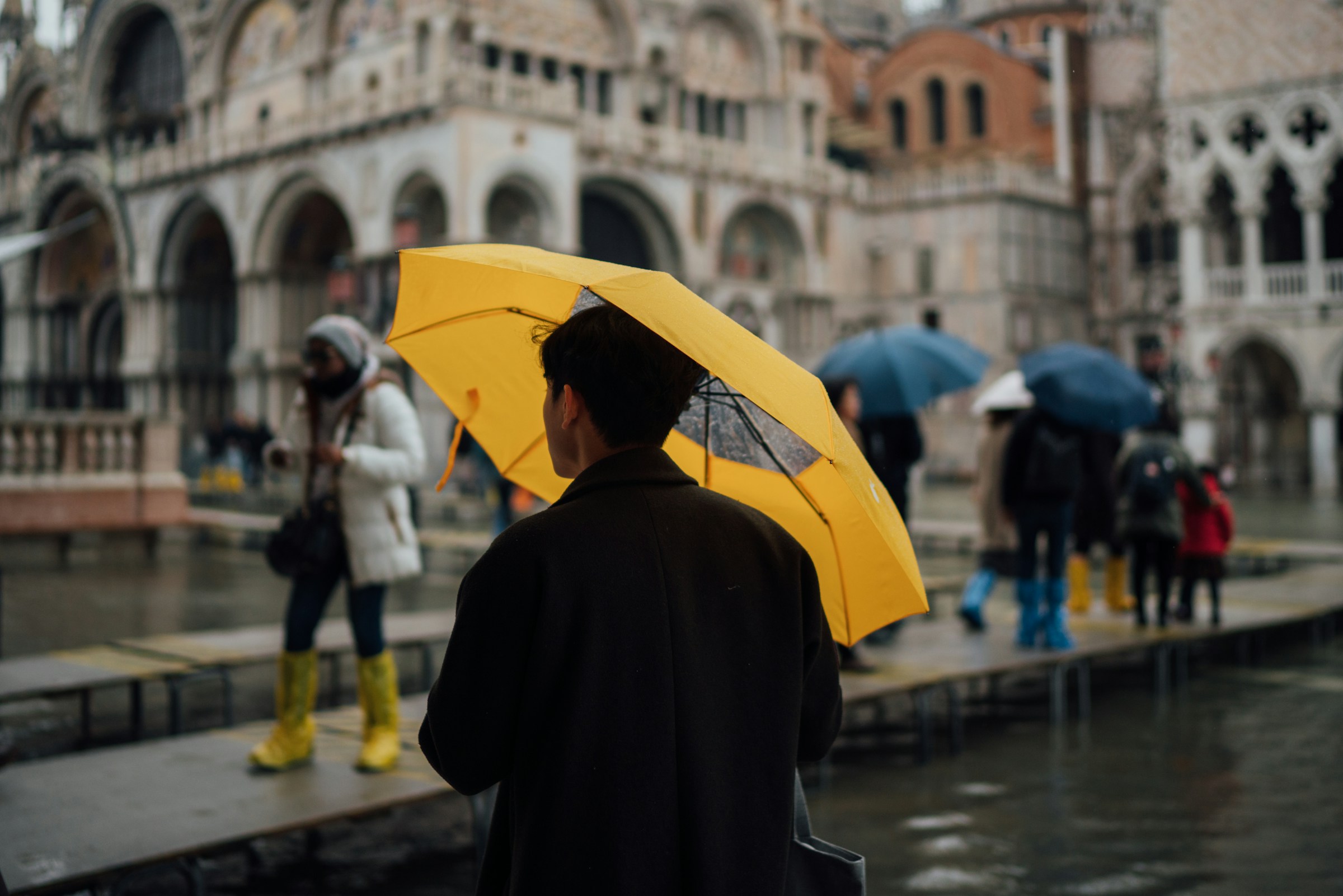
Adapting to rising climate risks: A matter of justice
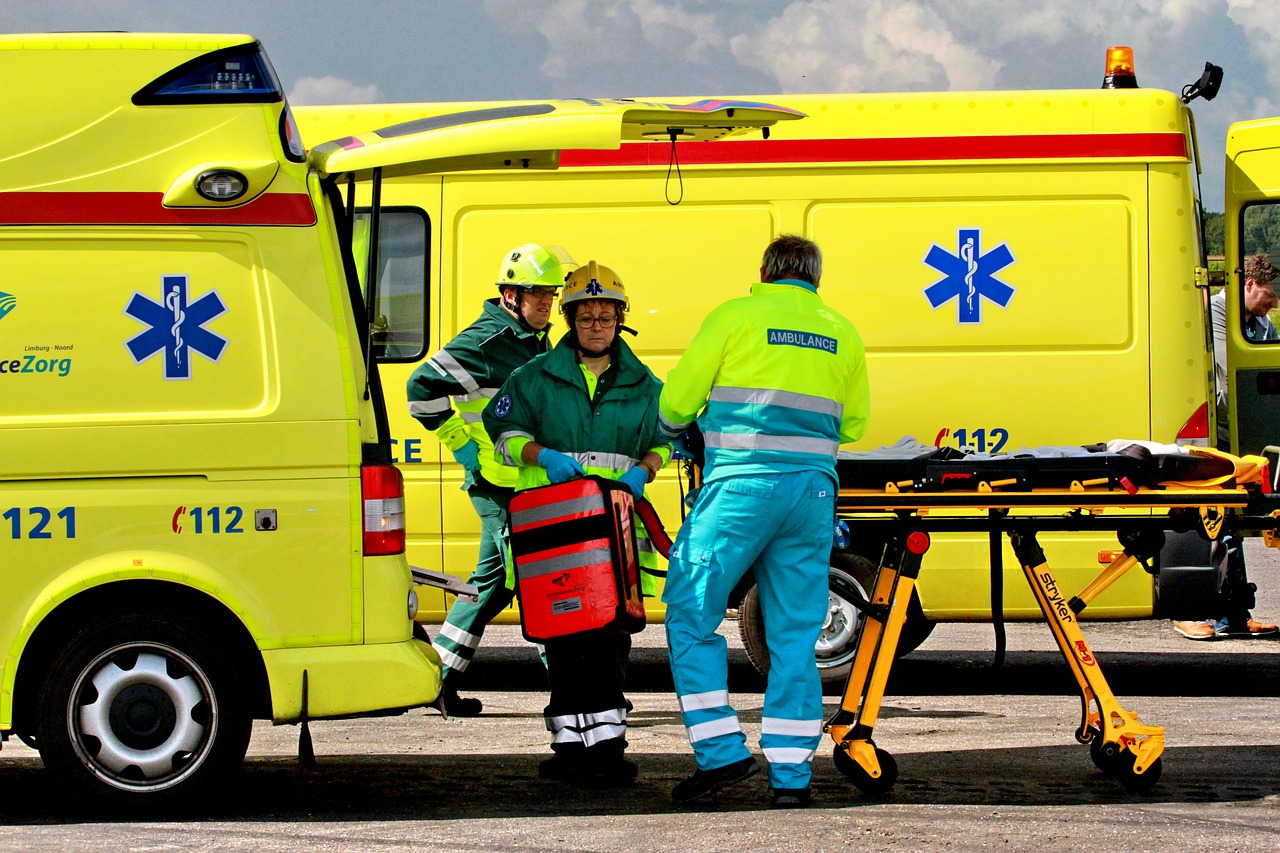
Summer’s Threat: Heat, health and climate risk in Europe
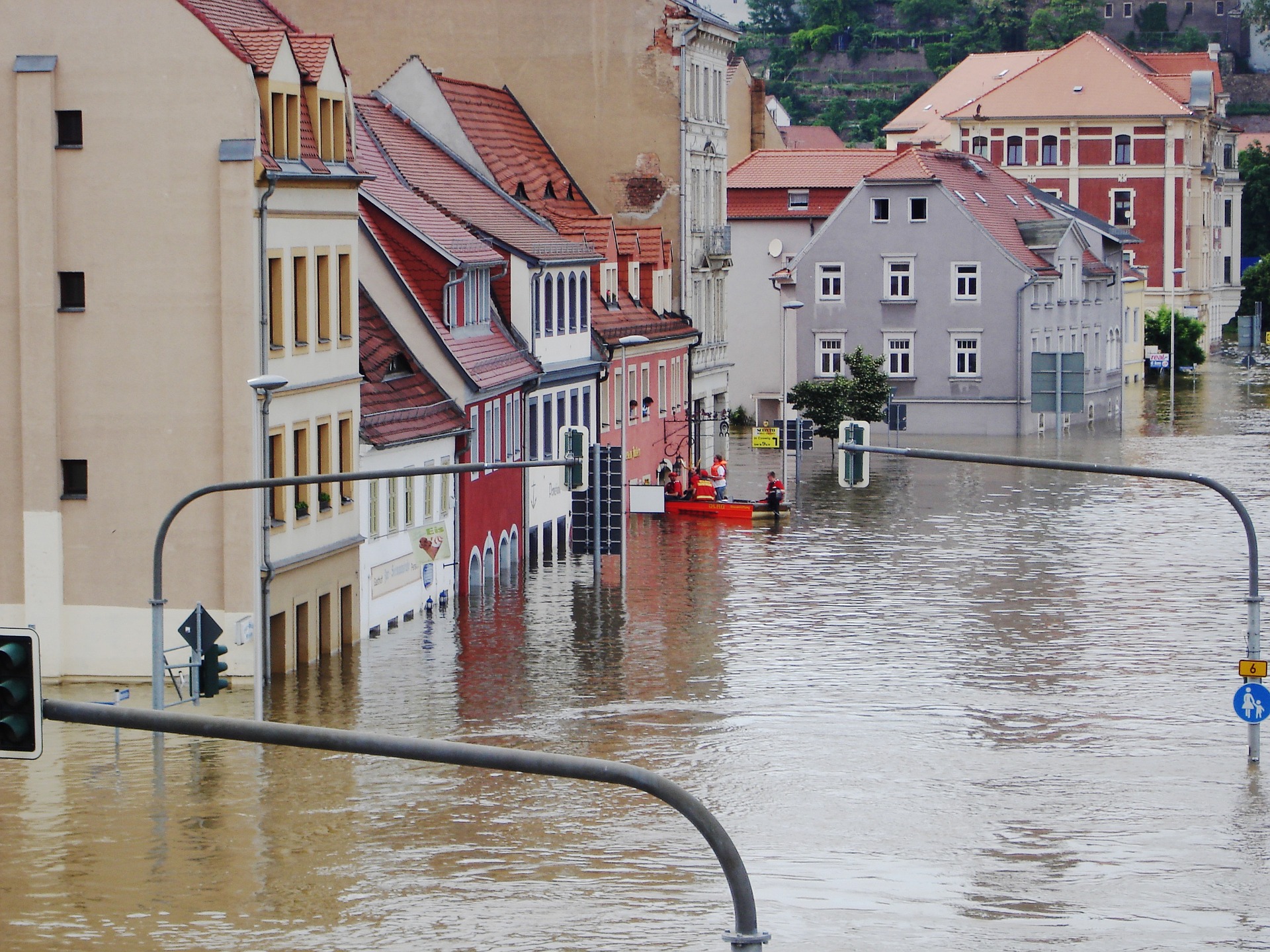
A call to action for a climate-resilient Europe. Interview with Hans-Martin Füssel.
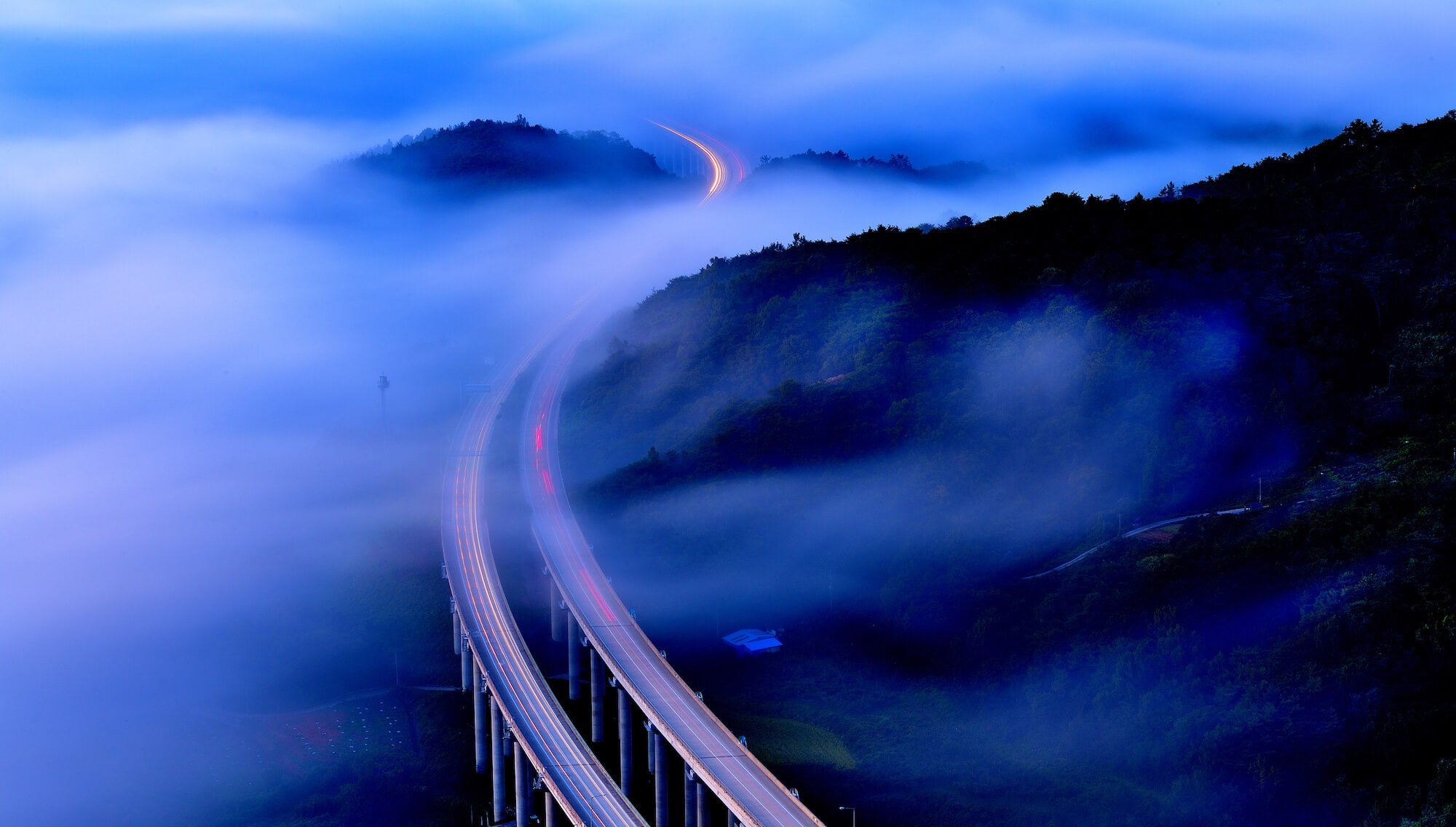
A survival guide for humanity: the IPCC’s latest synthesis report
From science to policy: a matter of urgency, action, and hope. The latest IPCC synthesis report lays out the harsh truth on the current state of the climate. But, it also shows us that we have the tools to invert our current trajectory and that the decisions and measures we take today will have a lasting effect on the world of tomorrow. A collection of media reactions.
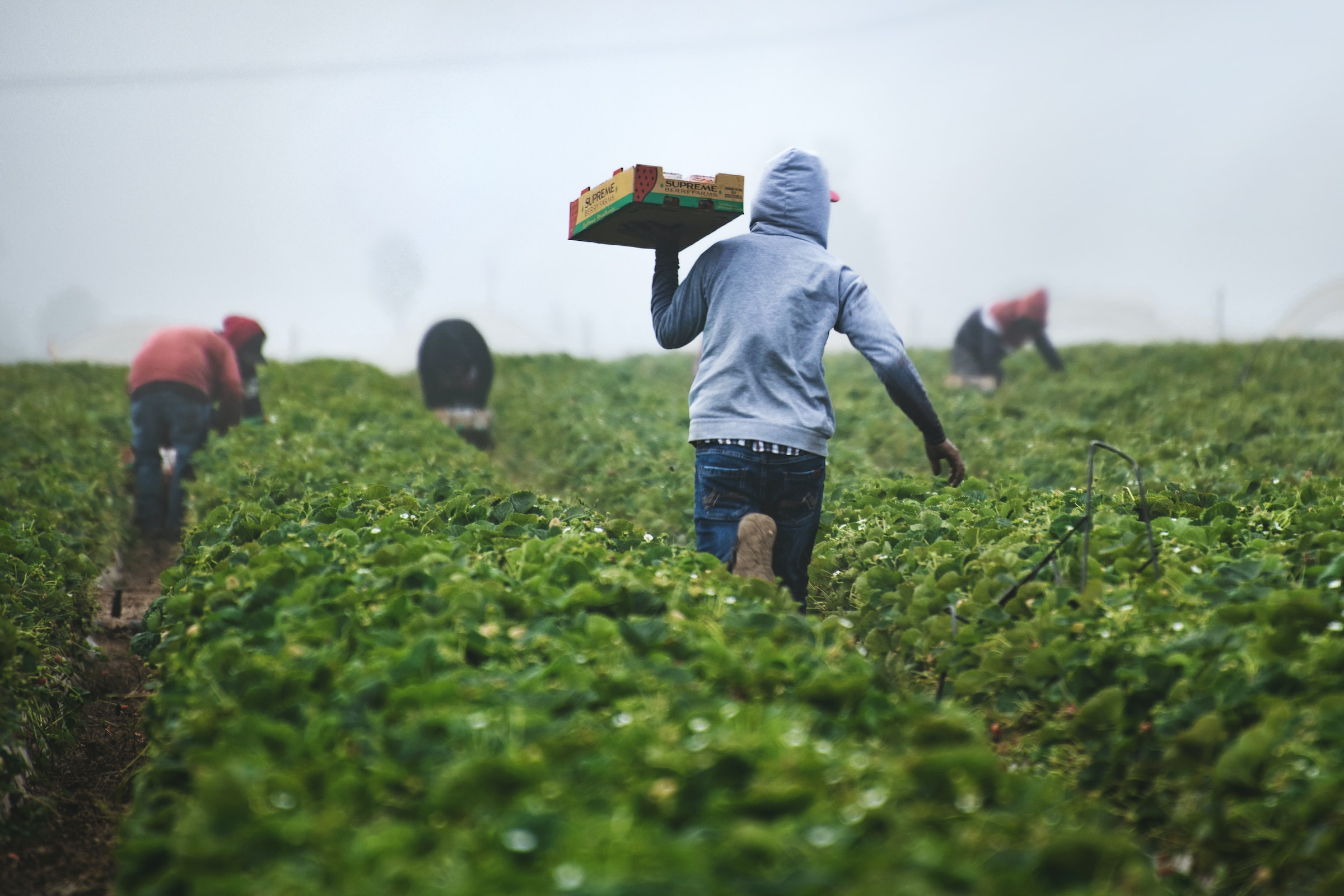
Can AI help nourish a sustainable food system?
The democratization of technology and the ability of AI driven models to better process both quantitative and qualitative data is opening new opportunities for the food system to become both more productive and sustainable.
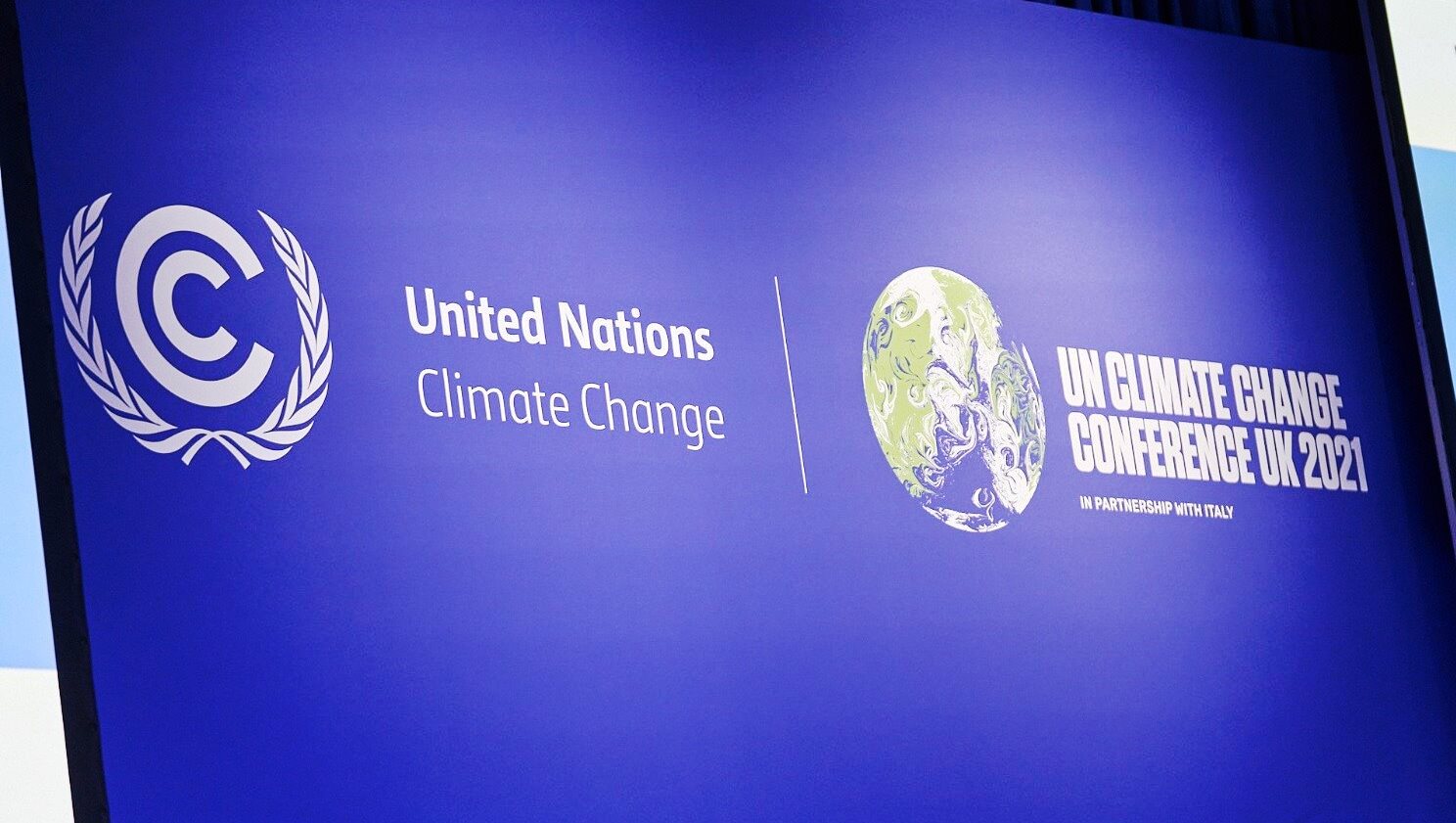
COP26: There is no mitigation without cooperation
The rules are now fixed. Corresponding adjustments and partial cancellation ensure key elements to preserving climate integrity. A look at Article 6, one of the thorniest issues in climate negotiations, which has gradually taken shape from Paris to Glasgow and regulates how countries cooperate – from bilateral trade to carbon markets – to enhance mitigation outcomes and support adaptation.
Privacy Overview
share this!
March 21, 2024
This article has been reviewed according to Science X's editorial process and policies . Editors have highlighted the following attributes while ensuring the content's credibility:
fact-checked
trusted source
Climate change disrupts vital ecosystems in the Alps
by University of Manchester
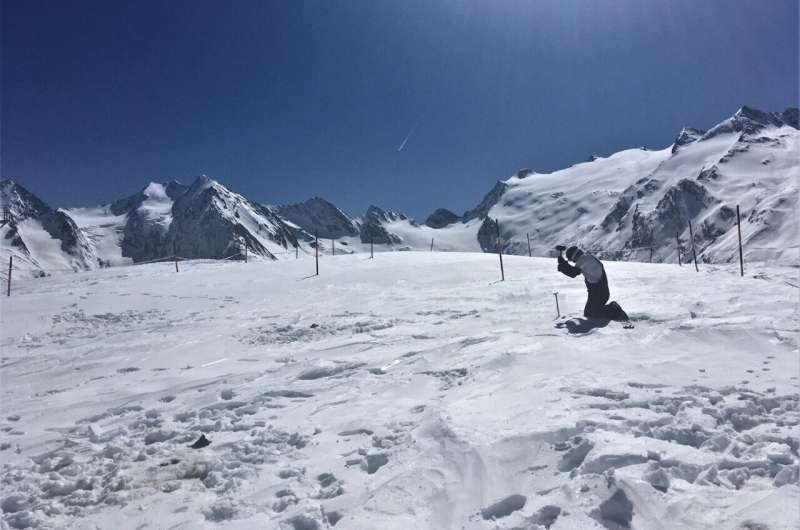
Reduced snow cover and shifting vegetation patterns in the Alps, both driven by climate change, are having major combined impacts on biodiversity and functioning of ecosystems in the high mountains, according to new research published today.
Mountain ranges covering vast areas of the world are warming much faster than surrounding lowland areas, triggering huge reductions in snow cover and rapid upward movement of dwarf shrubs, such as heather.
Scientists at The University of Manchester have found that these changes are disrupting the timing of crucial alpine ecosystem functions performed by plants and soil microorganisms .
The research, published today in the journal Global Change Biology , shows that high mountain ecosystems may be less capable of retaining the important nutrients needed to sustain plant growth and maintain biodiversity in these harsh environments.
Dr. Arthur Broadbent, lead author of the study, said, "Our paper reveals how important the timing of many plant and soil processes are in seasonal ecosystems. People may be familiar with mismatches between plant flowering and the emergence of pollinators caused by climate change .
"In our study, we have demonstrated that plant and soil processes show fascinating seasonal dynamics, and that the timing of these processes can also be disrupted by climate change. The high mountains are like a canary in the coal mine because they are warming much faster than the global average. That makes our findings particularly alarming."
Every year, seasonal changes in mountain ecosystems prompt large transfers of nutrients between plants and microbial communities in alpine soils. Following snowmelt in spring, plants start to grow and compete with soil microbes for nutrients, thereby triggering a shift in the storage of nutrients from soil to plants. This transfer is reversed in autumn, as plants die back, and nutrients are returned to the soil within dead leaves and roots.
During alpine winters, snow acts like an insulting blanket that allows soil microbes to continue functioning and store nutrients in their biomass and enables plants to survive cold alpine winters. Climate change is predicted to cause an 80–90% loss of snow cover by the end of the century in parts of the European Alps and advance the timing of snowmelt by five to 10 weeks.
Prof. Michael Bahn, a collaborator on the project from the University of Innsbruck, said, "Declining winter snow cover is one of the most obvious and pronounced impacts of climate change in the Alps. Its effects on the functioning and biodiversity of alpine ecosystems are a major concern for people living in Alpine regions and beyond."
The scientists from The University of Manchester, in collaboration with the University of Innsbruck, Helmholtz Zentrum München, and the Centre for Ecology and Hydrology, carried out the work on a long-term field experiment in the European Alps. The findings highlight the detrimental effect of climate change on seasonal transfers and retention of nutrients between plants and soil microbes.
Richard Bardgett, Principal Investigator and Professor of Ecology at The University of Manchester's Department of Earth and Environmental Sciences, said "Our work demonstrates how the combination of different facets of climate change can severely disrupt below-ground ecological processes that underpin plant growth in alpine ecosystems, with potential long-term consequences for their biodiversity and functioning."
For scientists, understanding how ecosystems respond to multiple simultaneous climate change impacts remains a major challenge. Interactions between direct and indirect climate change factors, such as snow cover change or less obvious ones such as dwarf-shrub expansion, can lead to sudden and unexpected changes in ecosystem functioning. These effects are impossible to predict by studying climate change factors in isolation.
Provided by University of Manchester
Explore further
Feedback to editors

How insects control their wings: The mysterious mechanics of insect flight
5 minutes ago

Data-driven music: Converting climate measurements into music
7 minutes ago

Discovery of new ancient giant snake in India

Researchers create nanomembrane to increase reaction rate in chemical production
43 minutes ago

Researchers reveal a hidden trait in Mycobacterium genomes governing stress adaptation
45 minutes ago

Scientists experimentally observe current-driven antiskyrmion sliding

Amazonia's fire crises: Emergency fire bans insufficient, strategic action needed before next burning season

Researchers realize hydrogen formation by contact electrification of water microdroplets and its regulation

Scientists construct organo-phosphatic shells of brachiopods

Instinct for 'fight or flight' may be much older than we thought
Relevant physicsforums posts, can four legged animals drink from beneath their feet.
Apr 15, 2024
Mold in Plastic Water Bottles? What does it eat?
Apr 14, 2024
Dolphins don't breathe through their esophagus
Is this egg-laying or something else.
Apr 13, 2024
Color Recognition: What we see vs animals with a larger color range
Apr 12, 2024
How to Implement Beamforming in Ultrasound Diffraction Tomography
Apr 10, 2024
More from Biology and Medical
Related Stories

Climate change-driven snowmelt in Alps triggers abrupt seasonal change
Feb 25, 2021

The future is likely less skiable, thanks to climate change
Mar 13, 2024

How alpine ecosystems are responding to climate change: It all comes down to the soil
Sep 16, 2019

Study explores an underappreciated way warmer temperatures will impact ecosystems: Decomposition
Sep 11, 2023


Increased droughts are disrupting carbon-capturing soil microbes, concerning ecologists
Apr 12, 2023

Team investigates how warming affects uptake and release of carbon dioxide in subarctic grassland
Jul 18, 2023
Recommended for you

Soil bacteria link their life strategies to soil conditions: Study
17 hours ago

Honey bees experience multiple health stressors out in the field
20 hours ago

East coast mussel shells are becoming more porous in warming waters

New study calls into question prior study results that found tumor transmission slowing in Tasmanian devils
23 hours ago

Unique field study shows how climate change affects fire-impacted forests

Researchers find babbling by zebra finch chicks is important step to memorizing songs
Let us know if there is a problem with our content.
Use this form if you have come across a typo, inaccuracy or would like to send an edit request for the content on this page. For general inquiries, please use our contact form . For general feedback, use the public comments section below (please adhere to guidelines ).
Please select the most appropriate category to facilitate processing of your request
Thank you for taking time to provide your feedback to the editors.
Your feedback is important to us. However, we do not guarantee individual replies due to the high volume of messages.
E-mail the story
Your email address is used only to let the recipient know who sent the email. Neither your address nor the recipient's address will be used for any other purpose. The information you enter will appear in your e-mail message and is not retained by Phys.org in any form.
Newsletter sign up
Get weekly and/or daily updates delivered to your inbox. You can unsubscribe at any time and we'll never share your details to third parties.
More information Privacy policy
Donate and enjoy an ad-free experience
We keep our content available to everyone. Consider supporting Science X's mission by getting a premium account.
E-mail newsletter
- FAQ for users
- FAQ for providers
- Guidance to search function
- Tutorial Videos
- Share your information
- About Climate-ADAPT
- Dissemination materials
- Tutorial videos
- Inspiring Climate-ADAPT use cases
- Climate-ADAPT performance reporting
- Climate-ADAPT events and webinars
- Country specific promotions
- EU Adaptation Strategy
- EU Mission on Adaptation
- EU Reporting on Adaptation
- EU Covenant of Mayors
- EU Sustainable Finance Strategy
- EU funding of adaptation
- Agriculture
- Biodiversity
- Business and Industry
- Coastal areas
- Cultural heritage
- Disaster risk reduction
- Land use planning
- Marine and fisheries
- Mountain areas
- Water management
- EU REGIONAL POLICY
- European Climate Risk Assessment
- Just resilience
- Nature-based solutions
- Country Profiles
- Cities and towns
- Adriatic-Ionian
- Alpine Space
- Atlantic Area
- Central Europe
- Danube Area
- Mediterranean (Euro-Med)
- North West Europe
- Northern Periphery and Arctic
- South West Europe
- Outermost Regions
- Black Sea Basin (NEXT)
- Mediterranean Sea Basin (NEXT)
- Impacts, risks and vulnerabilities
- Adaptation options
- Uncertainty guidance
- Monitoring, Reporting and Evaluation
- Europe's vulnerability to climate change impacts occurring outside Europe
- Climate Services
- Indicators in Climate-ADAPT
- RESEARCH AND INNOVATION PROJECTS
- EUROPEAN CLIMATE DATA EXPLORER
- Adaptation Support Tool
- Urban Adaptation Support Tool
- Urban Adaptation Map Viewer
- Economic losses and fatalities
- Economic tools
- Case study explorer
- LIFE projects
- INTERREG projects
- Search the database
- EUROPEAN Climate and Health Observatory
- ADAPTATION IN THE FORESTRY SECTOR
Language preference detected
Do you want to see the page translated into ? Yes, reload the page using my language settings.
Climate change as a threat to tourism in the Alps
Description.
Switzerland’s economy depends heavily on tourism. For many alpine areas in the country, winter tourism is the most important source of income, and snow-reliability is one of the key elements of the offers made by tourism in the Alps. The financial viability of winter tourism, however, depends on sufficient snow conditions. The lack of snow at the end of the 1980s left a lasting imprint on the tourism industry. If the assumptions of the impacts of climate change hold true, snow cover in the Swiss Alps will diminish, and this will, in turn, jeopardise the tourism industry. 85 % of Switzerland’s current ski resorts can be designated as snow-reliable. If climate change occurs, the level of snow-reliability will rise from 1200 m up to 1800 m over the next few decades. Only 44 % of the ski resorts would then still be snow-reliable. While some regions may be able to maintain their winter tourism with suitable adaptation strategies, others would lose all winter tourism due to a diminishing snow pack. Despite global warming, it is impossible to exclude the possibility of winters with heavy snowfall in the future (e.g. the winter of 1998/99, particularly February 1999). Climate change must be viewed as a catalyst that is reinforcing and accelerating the pace of structural changes in tourism.
Today, adaptation strategies are predominant in tourism (e.g. artificial snow production). As an industry that will be severely affected by climate change, however, tourism will increasingly have to focus on mitigation strategies (e.g. less greenhouse gas emissions by tourism traffic).
Reference information
Published in Climate-ADAPT Mar 11 2019 - Last Modified in Climate-ADAPT Dec 12 2023
Created by:
Reviewed by:, date of publication:, climate impacts:, adaptation elements:, geographic characterisation:, biogeographical regions:.
Switzerland
Document Actions
Weather, weekday, and vacation effects on webcam recorded daily visitor numbers in the alpine winter season
- Original Paper
- Open access
- Published: 01 December 2023
- Volume 68 , pages 305–316, ( 2024 )
Cite this article
You have full access to this open access article
- Simon Kloos ORCID: orcid.org/0000-0002-9242-1456 1 ,
- Carina Bigalke 1 ,
- Matthias Neumair 2 &
- Annette Menzel 1 , 3
568 Accesses
Explore all metrics
Winter tourism is an important economic factor in the European Alps, which could be exposed to severely changing meteorological conditions due to climate change in the future. The extent to which meteorology influences winter tourism figures has so far been analyzed mainly based on monthly or seasonal data and in relation to skier numbers. Therefore, we record for the first time daily visitor numbers at five Bavarian winter tourism destinations based on 1518 webcam images using object detection and link them to meteorological and time-related variables. Our results show that parameters such as temperature, cloud cover or sunshine duration, precipitation, snow depth, wind speed, and relative humidity play a role especially at locations that include other forms of winter tourism in addition to skiing. In the ski resorts studied, on the other hand, skiing is mostly independent of current weather conditions, which can be attributed mainly to artificial snowmaking. Moreover, at the webcam sites studied, weekends and vacation periods had an equal or even stronger influence on daily visitor numbers than the current weather conditions. The extent to which weather impacts the (future) visitor numbers of a winter tourism destination must therefore be investigated individually and with the inclusion of non-meteorological variables influencing human behavior.
Similar content being viewed by others

Analyzing Human Activities Through Volunteered Geographic Information: Using Flickr to Analyze Spatial and Temporal Pattern of Tourist Accommodation

Sustainable Tourism: Crowdsourced Data for Natural Scene and Tag Mining
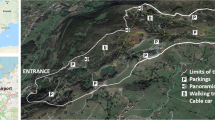
Weather influences on zoo visitation (Cabárceno, Northern Spain)
Domingo F. Rasilla Álvarez & Sonia Crespo Barquín
Avoid common mistakes on your manuscript.
Introduction
Tourism has a high economic and social impact on the European Alpine region (Bätzing 2015 ; Bausch & Gartner 2020 ; Pröbstl-Haider et al. 2019 ). However, in future climate change scenarios, negative impacts on skiing and winter tourism, such as reduced reliability of slopes that depend on natural snow, less possibilities to produce artificial snow, shortened and more variable skiing seasons, and a decrease in the number of operating ski resorts, prevail (Gilaberte-Búrdalo et al. 2014 , Steiger et al. 2019 , Steiger et al. 2022 and especially for Bavaria: Mayer & Steiger 2013 ). With a global warming of only 2°, the weather-related risk of losses in winter overnight stays associated with ski tourism in Europe is projected to be as high as 10.1 million overnight stays per winter season (Damm et al. 2017 ).
The relationship between meteorology and winter tourism and especially ski tourism numbers has been intensively studied. In multiple studies, the influence of snow conditions and/or weather on ski tourism has been confirmed (Demiroglu et al. 2015 ; Mayer and Abegg 2022 ; Shih et al. 2009 ). However, it is necessary to distinguish between the magnitude and nature of the relationship. While Koenig and Abegg ( 1997 ), Steiger ( 2011 ) and Pickering ( 2011 ) found in some cases considerable effects of winters with little snow on ski tourism in Switzerland, Austria, and in Australia, respectively, the effects of different weather variables were rather small in other studies (e.g., Falk 2013 , 2015 ). It is also clear that the influence of weather and in particular snow depth on ski tourism is directly related to the altitude of the ski area studied: While the dependency between weather and tourist numbers is higher especially in low altitude ski resorts with higher average temperatures and a lower snowmaking potential, higher altitude ski resorts sometimes show no or even inverse correlation (Falk 2010 ; Steiger 2011 ; Töglhofer et al. 2011 ). In some cases, there are also interactions between neighboring areas, with higher-elevation ski areas in particular experiencing an influx of skiers during winters with little snow, as winter sports activities are not possible at lower elevations (Gonseth 2013 ; Koenig and Abegg 1997 ; Mayer et al. 2018 ). Another influencing factor in this relationship is the timing of various phenomena: for instance, high snow levels in early winter have a positive effect on ski tourism (Falk and Hagsten 2016 ; Falk and Vieru 2017 ), and there is a positive correlation if the Easter vacation take place relatively early in the year (Falk 2010 ). Other studies have focused on less considered aspects within this topic: according to Malasevska et al. ( 2017 ), the relationship between the daily number of visitors and the wind chill temperature in ski resorts in Norway is not linear, and following Hamilton et al. ( 2007 ) urban weather also has an influence on ski tourism. Finally, it should be noted that increasingly advanced artificial snowmaking in ski resorts significantly minimizes the relationship of natural snow conditions and skier numbers (Falk and Lin 2018 ; Gonseth 2013 ).
One of the main problems in this area of research is that often only monthly or seasonal winter and ski tourism numbers are evaluated and the dynamics of daily changing conditions are not captured because daily numbers do not (publicly) exist or are not recorded (except Mayer et al. 2018 ). One way to address this issue is to evaluate freely available webcam data (see also Staab et al. 2021 ) on a daily basis. This has already been applied in other tourism sectors, as pedestrian detection in downtown areas (Szczepanek 2020 ) and analysis of beach tourism (Gómez-Martín and Martínez-Ibarra 2012 ; Guillén et al. 2008 ; Ibarra 2011 ; Kammler and Schernewski 2004 ; Moreno et al. 2008 ; Rodríguez-Toubes et al. 2020 ; Zhang and Wang 2013 ). The advantage of this detection method over conventional frequency data (such as sold ski/parking tickets) is on the one hand the more precise spatial and temporal recording of people: webcam data can analyze specific areas of interest, while temporal patterns in frequentation can also be evaluated if the temporal resolution is high enough. On the other hand, this methodology can also generate frequentation data for places that are not connected to any (payment) infrastructure (e.g., non-paying parking lots and hiking trails), and thus, no other data is available. Another striking aspect is that daily tourist figures for winter tourism analyze exclusively skiers and snowboarders in this context. This is an important gap, especially given the supposedly rising importance of non-skiing activities, or to be more precise, activities beyond paying skiing guests (e.g., ski touring on ski slopes or hiking). Combining these two research gaps, this approach can provide added value to various research issues due to the new perspective, e.g., assessing the effects of climate change on winter/ski tourism demand patterns or sustainability monitoring at relevant touristic destinations.
In this study, we use for the first time (to our knowledge) the approach to derive daily visitor numbers — which contain a clear added value compared to monthly/annual numbers in understanding tourist behavior — of different tourist types of winter tourism by means of webcam images. In a second step, we analyze the association with meteorological and time-related variables. Within the study, the aim is to answer the following research questions:
To what extent do time-related and meteorological variables influence daily visitor numbers in winter, and can these relationships describe the character of a tourist destination?
What influence do time-related and meteorological variables in combination have on daily visitor numbers in winter and, if applicable, can more and less important factors for the number of visitors be determined?
Materials and methods
Study area and period.
A total of five webcams were selected for this study, with all cameras installed in the Bavarian Alpine region. The webcam sites were selected by the criteria of (mostly) gapless data availability from 2018 to 2022 and appropriate image detail for person/car detection. Within the Bavarian Alps, tourism plays an important role in the regional economy, with a contribution to national income in the Alpine counties of at least 5% and in some cases more than 15% (Soboll et al. 2012 ). The webcams of Zugspitze (summit and valley), Hausberg, and Steckenberg are located in the Zugspitz Region (Fig. 1 ). The Zugspitz Region is one of the most popular tourist destinations in Bavaria. Per year, the region counts over 5 million overnight stays (Zugspitz Region GmbH 2023 ). The ski resort Zugspitze is the only glacier ski resort in Germany with 20 km of slopes. The lifts are operated from December until May (Bayerische Zugspitzbahn Bergbahn AG 2023b ). The “Zugspitze:top” (Radlherr & Keuschnig 2023d ) camera is located at the summit observation deck, whereas the second camera (“Zugspitze:bot”; Radlherr and Keuschnig 2023c ) is at the (bottom) valley station of the Eibseebahn. This camera is the only one that is not analyzed by the number of people, but by the number of vehicles, as it records the parking lot of the Eibseebahn. In addition to the Zugspitz ski area, the Garmisch-Classic ski area, which offers 40 km of slopes and is operated from December to April, is in close proximity (Bayerische Zugspitzbahn Bergbahn AG 2023a ). Within this ski area, the third camera (“Hausberg”; Radlherr and Keuschnig 2023a ) is located at the Hausbergbahn top station.
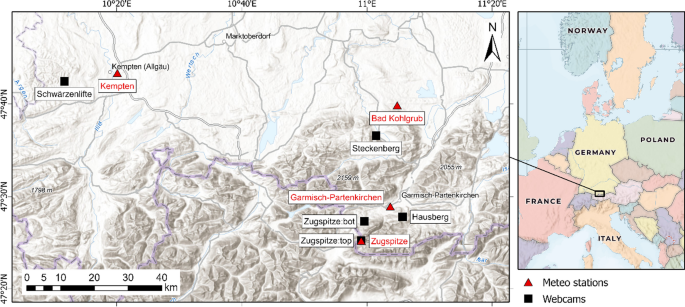
Overview map of the five analyzed webcams and four nearby meteorological stations (left) along with their location in Europe (right; data source: Esri, FAO, NOAA, USGS; HERE, Garmin, Foursquare, METI/NASA)
The fourth webcam (“Steckenberg”; Panomax GmbH 2023 ) of the Zugspitz region is mounted in the ski resort Steckenberg. The ski area is located near Unterammergau and, with 5 km of slopes; it is one of the smaller ski areas in the region (Steckenberg Erlebnisberg Unterammergau 2023 ). The fifth webcam (“Schwärzenlifte”; Radlherr and Keuschnig 2023b ) provides images of the Schwärzenlifte Eschach ski area, with 3 km of slopes (bergfex GmbH 2023 ). This ski area is located in the Allgäu region, about 10 km west off Kempten. The webcam results were merged with weather information of the German Meteorological Service (Deutscher Wetterdienst, DWD). To ensure the most accurate representation of the weather conditions at the camera locations, the climate stations with the shortest distance to the webcams were chosen. A detailed list is given in Table 1 .
The study covers three winter periods from 2018 to 2022, each from December 1st to March 31st of the following year. The camera at Schwärzenlifte was only evaluated starting from 2019 on due to a different camera angle in the winter of 2018/2019. In addition, the period from December 2020 until March 2021 was excluded from the analysis, since due to COVID-19 pandemic regulations, the lifts were out of service during this period (Deutsche Presse-Agentur GmbH 2021 ; Schlemmer and Schnitzer 2023 ; Steiger et al. 2023 ). As the webcams are located exclusively at lift stations, this effect would override the influence of weather conditions on visitor numbers, as presumably significantly fewer persons would be detected than under non-pandemic conditions. To exclude double counting, only one image per day was analyzed. For the analysis, the time of 1:00 pm was chosen, as all visitors should have arrived at the locations by then and only a few visitors have already departed. For reasons of comparability, the same time was set for all five webcams.
The climate stations of the DWD provide a range of meteorological variables (Deutscher Wetterdienst 2022 ). Fresh snow height was additionally calculated as the difference between the snow height on the previous day and the snow height on measurement day. Snow on previous day was selected as a variable with the hypothesis that increased tourism activity can be expected in the ski areas when there is (good skiable) natural fresh snow. An overview of the weather variables used in the study is given in Table 2 . In addition to the meteorological variables, the months (December, January, February, March), weekends (yes/no), and Bavarian school vacations (yes/no) were also included in the analysis (Bavarian State Ministry for Education and Cultural Affairs 2023 ).
Object detection and computer vision
In this study, the data analysis software R (version 4.2.1) was used, utilizing the “platypus” package, in combination with the “keras” (image classification with Convolutional Neural Networks) and “tensorflow” (Machine Learning) package for object detection. An existing code provided by Maj ( 2020 ) was altered for the study, for analyzing “own” pictures, setting different thresholds to improve the recognition rate, or optimizing the output presentation for a more convenient evaluation. Object detection is done by using the one-step detection algorithm YOLO (You only look once). In this study, the third version, YOLOv3, was used containing an architecture with pre-trained COCO (Common Objects in Context) weights. YOLOv3 uses an image size of 320 × 320 pixels. For this study, the image size was altered according to the size of the webcam pictures which is further described in the following section. As the object detection is done at three scales (8, 16, and 32), the image size however must be dividable by 32 (Szczepanek 2020 ). There are 80 different object classes, which can be identified by the model. Here, only two (“person” and “car”) were relevant.
Preparation of webcam material
As a first step, the images were downloaded from the respective websites (see 2.1; with the help of the operators) and cropped. This was necessary to further increase the recognition rate because people/cars in the background of the picture or at a greater distance were recognized less well or not at all. The section of interest was selected in such a way that individual persons/cars could still be recognized as such. In Table S1 , the original sizes and the image sections are listed.
As a second step, the webcam cut-outs were sorted and grouped after the density of objects to be analyzed, in order to determine individual model thresholds for the specific density groups and thus obtain better detection results. Gómez-Martín and Martínez-Ibarra ( 2012 ) used this technique to sort webcam pictures by people densities at a Spanish beach. In this study, four levels of density were set subjectively and without any specific thresholds: density group “no person/no car”, density group 1 (d1), density group 2 (d2), and density group 3 (d3). The density levels can be defined as follows: (d1) only a few people/cars can be seen, (d2) significantly more people/cars can be seen, but the pictures are not “overcrowded”, (d3) High density of people/cars with many overlaps. In Fig. 2 , example pictures of the webcam “Zugspitze:top” are provided. In the case of the webcam Steckenberg for winter 2021/2022, the pictures were additionally grouped by “blurred” and “not blurred”, because a significant proportion of the webcam images were blurred here. In individual cases, pictures had to be assigned to no person/cars because the software did not recognize any persons/cars if the picture quality was too poor or due to unfavorable weather conditions.
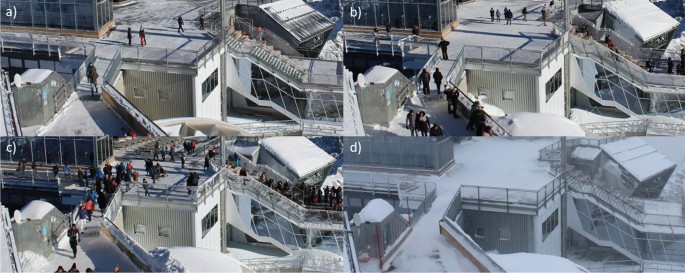
Example pictures of the different density groups for the location “Zugspitze:top” (a: density group “d1”, b: density group “d2”, c: density group “d3”, d: density group “no person”)
After the preparation of the webcam pictures, sample tests for each camera and each density group were conducted. For this purpose, 30 random images of each camera were picked (10 per density group). In the case of Steckenberg, another 24 pictures were pretested because of the blurred density groups in 2021/2022. To be able to compare actual with recognized numbers of the model, the persons/cars on the 30 chosen pictures for each webcam were counted manually, first. In the next step, the numbers were compared with the results of the object detection for the same images. If in more than five cases the deviation was higher than 20% or, in absolute numbers, higher than 5, the recognition thresholds of the YOLOv3 model “obj_threshold” and “nms_threshold” were adapted. The thresholds for each camera are summarized in Table S2 , and the final results of the sample tests can be found in Table S3 . In this study, in total an amount of 1518 images were analyzed with the detection algorithm. For “Zugspitze:bot”, the highest number of images was available (361), followed by “Zugspitze:top” (356) and “Hausberg” (356). Significantly fewer images were available for the ski areas “Schwärzenlifte” (243) and “Steckenberg” (202). For three locations (“Zugspitze:top”, “Hausberg”, “Steckenberg”), most of the images are (manually) classified as d2. Only at “Zugspitze:bot” (69%, d3) and “Schwärzenlifte” (34%, d1), more images were assigned to another density group. Detailed information about the distribution among the density groups can be found in Table S3 .
Statistical analysis
In the first step of the analysis, the webcam data were univariately analyzed with both the time-related (boxplots) and the meteorological data (Spearman’s rank correlation). To detect statistically significant differences between subgroups, the Kruskal–Wallis test was applied in the time-related analysis. Furthermore, two-way interactions of all variables within a model analysis were evaluated. In the first step, the appropriate model had to be selected. To model count data two types of models were considered — a Poisson generalized linear model (GLM) or negative binomial (NB) GLM. Since there is a high variance in the data and thus a tendency to overdispersion, an NB was the model of choice (Dunn and Smyth 2018 ). Since the available data is characterized by many zeros, zero-inflated models were also considered for evaluation. Compared to the zero-inflated Poisson (ZIP) model, the zero-inflated negative binomial (ZINB) model simultaneously considers zero inflation and overdispersion in the numerator of the model. Therefore, this model may be a good choice for this study (Neelon 2019 ). The Akaike information criterion (AIC) was used as a decision criterion for model selection (Akaike 1998 ). In addition to the AIC, the significance ( p value < 0.05) of individual variables was used as a decision criterion.
Before comparing the models, the variables of interest were determined. Of the initially selected meteorological variables (see Table 3 ), seven were chosen for the model based on the following arguments: temperature and wind variables in the mean, as well as the minimum and maximum in a daily resolution were provided by DWD. However, these were highly correlated and hence only mean wind speed and maximum temperature — as the determining temperature variable of the daily weather forecast — were included. In this study rather low-elevation ski areas (except Zugspitze) were considered, which often must be artificially snowed to maintain operations. Thus, artificial snow is an important factor when it comes to ski tourism activities in winter (e.g., Steiger et al. 2019 ). However, artificial snow is not considered in this study. Since the correlations of snow height and fresh snow with visitor numbers were low or not significant for most of the sites either, these variables were left out of the multivariable model. In addition to the weather variables, the indicator variables weekends and vacations were included. Months were not considered, as they provided little information about visitor behavior.
As a next step, a NB model and a ZINB were set up using all variables listed in Table 3 and for all five locations separately. After model fitting, the AIC of both models was compared. The respectively best models were refined. To obtain a model consisting of only significant variables for each site, the variables with the highest p-value were removed sequentially. For the ZINB models, this procedure was conducted for the zero-inflated part at first, then for the count part. Finally, the AIC of the final models was compared with Poisson and ZIP models for validation and ZINB models were compared with a NB model.
Time-related variables
Weather and time-related variables had different effects on visitor numbers at the five sites. In terms to month, the number of people/cars recorded at the Zugspitze was very evenly distributed both on the summit and in the valley (except for March; Fig. 3 a). While the ski area at Steckenberg recorded increasing numbers of people per month throughout the winter, the months February and January stood out clearly in terms of numbers at Schwärzenlifte and at Hausberg (4.5 or 13 times more people in February than in December; differences between the individual months were statistically significant: p value < 0.001). While the areas observed on top of and at the valley station Zugspitze revealed only minor differences in visitor/car numbers between weekend/no weekend and vacation/no vacation (Fig. 3 b and c; except Zugspitze:bot for vacation: p value < 0.001), the other ski areas showed greater differences. At Steckenberg (median on weekends: 61; median from Monday to Friday: 13) and at Schwärzenlifte (median on weekends: 43; median from Monday to Friday: 7), more skiers could be seen at the weekend than on a weekday, and also the median at Hausberg was higher at the weekend (54 to 28; at all three sites the differences between the subgroups were statistically significant: p value < 0.001). During vacation periods, the number of skiers detected at Steckenberg was slightly higher than during non-vacation periods (median in vacation season: 32; median not in vacation season: 18), whereas at Schwärzenlifte (42 to 8.5) and Hausberg (67 to 28) there is a clear preponderance during vacation periods (differences between the subgroups were statistically significant: p value < 0.001).
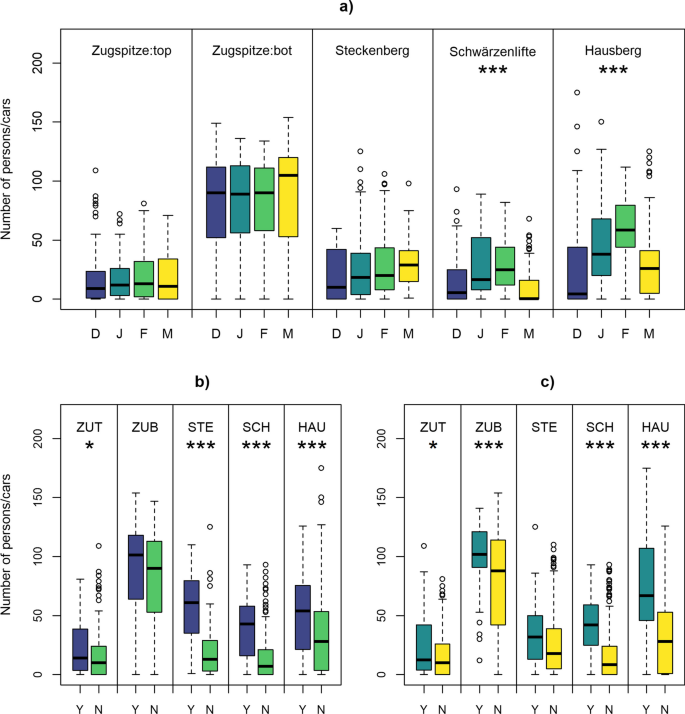
Number of people/cars detected in webcam images classified by a months (December, January, February, March), b weekends (yes/no), and c vacation periods (yes/no). The abbreviated sites in b and c follow the same ordering as in a . Statistically significant differences according to the Kruskal–Wallis test between the respective groups are marked with an asterisk (* p < 0.05; ** p < 0.01; *** p < 0.001)
- Meteorology
Differences were observed in the relationship between the detected persons/cars and the meteorological variables depending on the area (Fig. 4 and Table S4 ): While statistically significant positive correlations between people/cars and mean/maximum/minimum temperature and sunshine duration could be seen at the Zugspitze summit and at the bottom (Spearman’s rank correlation coefficient: + 0.04 to + 0.43), only correlations between − 0.16 and + 0.10 were retrieved for the other three webcams. Mostly negative correlation coefficients were determined for cloud cover (− 0.60 to − 0.05), precipitation sum (− 0.62 to − 0.03), fresh snow height (− 0.30 to 0.04), mean (− 0.29 to − 0.02), and maximum (− 0.37 to − 0.02) wind speed, as well as relative humidity (− 0.69 to − 0.07). Those correlations were statistically significant mainly for the Zugspitze webcams and Hausberg (exception: T Mean and T Min at Schwärzenlifte and T Min and P Sum at Steckenberg). The snow depth correlated only significantly (negative) with the number of detected cars at the Zugspitz valley station (− 0.27).
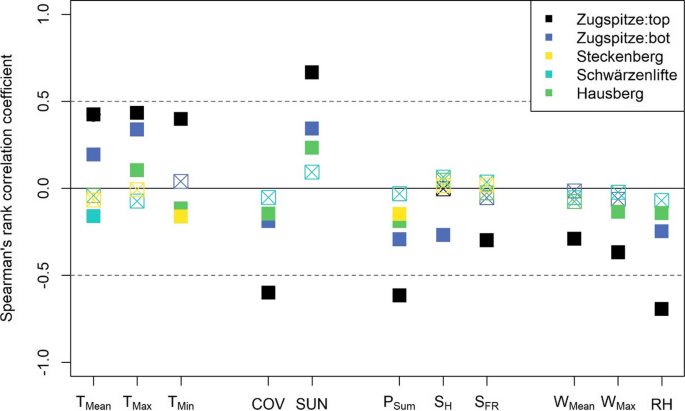
Spearman’s rank correlation between the people/cars detected in the webcam images and the individual daily meteorological variables ( T Mean = mean temperature; T Max = maximum temperature; T Min = minimum temperature; COV = cloudiness/coverage; SUN = duration of sunshine; P Sum = precipitation; S H = snow height; S FR = fresh snow height; W Mean = mean wind speed; W Max = maximum wind speed; RH = relative humidity). Filled squares indicate a statistically significant correlation ( p value < 0.05). The exact values can be found in Table S4
Multivariate modeling
Figure 5 summarizes the results of the multivariable analysis. For all webcams studied, the number of people/cars observed increased at weekends (+ 37 to + 283%) and during vacations (+ 51 to + 219%; the only exception is the Zugspitze valley station on weekends). Cloud cover (once − 6% per 1/8 coverage increase) and maximum temperature (once + 4% per °C increase) played only a minor role for most camera sites, while sunshine duration played a relevant role just at the two Zugspitze sites (+ 3/13% per hour increase). Wind speed (− 4 to − 53% per m/sec increase) as well as relative humidity (− 7 to − 22% per 10% increase) had a negative effect in some cases, and snowfall on the previous day had both positive (Schwärzenlifte: + 33%) and negative (Zugspitze:bot: − 19%) effects.
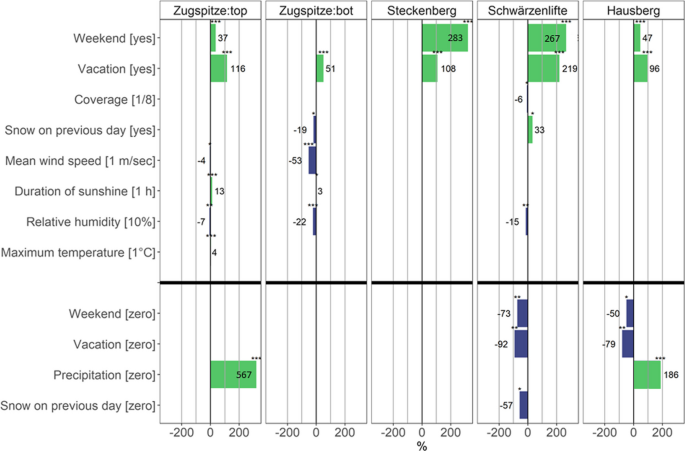
Change of numbers of persons or cars influenced by different meteorological and time-related variables in % (above) and zero-person probability in % (below). The upper part of the figure shows the significant variables of the count parts of the applied models. The lower part, separated by the black bolt line, shows the significant variables of the zero-inflated part of the ZINB. The asterisks describe the significance level of the variables: * p value < 0.05; ** p value < 0.01; *** p value < 0.001. For “Steckenberg” and “Zugspitze:bot”, a negative binomial model was applied. Thus, zero inflation was not measured. The respective numerical values can be found in Table S5
In the zero-inflated part of the ZINB, precipitation had a strong effect (+ 186 to + 567%) on the detection of zero persons in a webcam image in two out of three sites. On the other hand, the factors weekend (− 50 to − 73%) and vacation (− 79 to − 92%) had the opposite effect for Schwärzenlifte and Hausberg and snowfall on the previous day for Schwärzenlifte (− 57%).
Visitor numbers at the five studied sites in the Bavarian Alpine region in winter revealed both similar and divergent patterns with respect to time and weather, depending on the destination. At all sites, more people were present at weekends and during vacations on average. However, mean visitor numbers from winter 2018 to 2022 differed considerably among the locations. Single meteorological variables had a significant impact on the number of visitors only for the two Zugspitze webcams analyzed. Combining all meteorological and non-meteorological factors, it became clear that overall, the time-related variables had a similar or even higher influence on the daily visitor numbers than weather variables. However, each site revealed some unique properties related to its destination.
The monthly distribution of detected persons at the two Zugspitze webcam locations was more uniform than at the other three sites. The summit platform of the Zugspitze is a year-round tourism destination, which suggests a constant flow of visitors throughout the winter. The valley station of the Zugspitze cable car equally mirrored this pattern, except for the observed rise of visitor numbers in March, probably due to warmer weather — and therefore more pleasant weather conditions on the summit platform — and additional arrivals from hikers intending to walk at the Eibsee region. In contrast, the studied “classical” ski resorts had a much more seasonal pattern of detected people in the observed period, with maximum numbers in the main ski months of January and February. In both December and March, due to the absence of snow and temperatures being too high for (economically reasonable) artificial snowmaking, lift operations within the ski areas are partially suspended and thus significantly fewer people visited the ski lift areas. Additionally, another reason for the drop in numbers in March could be the decline in demand after the vacations, which normally take place in late February/early March in Bavaria.
At weekends and during vacation periods, more people were detected at all study sites, which seems logical from the point of view of conventional weekly working days (Monday to Friday) and family vacation schedules (depending on school vacation). However, these patterns here were also weaker at the Zugspitze sites than at the rest of the ski resorts. We assume that, in addition to regional and national day tourists, mainly international tourists from abroad visit the main attraction of the highest mountain in Germany, the Zugspitze, and thus act more independently of the day of the week and Bavarian vacations (Bavarian State Office for Statistics 2023 ). Other studies within this topic complex confirm winter skiing activities as part of vacation activities: Falk ( 2010 ) described that overnight stays at Austrian ski resorts increased by 1.9% on average when Easter vacations occur early, and Falk and Vieru ( 2017 ) observed a 9 to 10% increase in ski lift ticket revenue in Finland when Easter vacations occur early in March. Additionally, Malasevska et al. ( 2017 ) showed a strong inter-weekly variance in ski area visitors related to weekends in Norway, and Hamilton et al. ( 2007 ) a substantial proportion of ski area visitors in the USA operating on weekends or during vacation periods. Finally, Neumair et al. ( 2022 ) noted in their analysis of fatal outdoor accidents in the Austrian mountains in winter that weekends significantly increased the odds of these events.
A dichotomy between the two webcams at Zugspitze and the three ones in other ski resorts was also found in the correlation between meteorology and people/cars detected. For almost all analyzed variables, the correlations at Zugspitze were significant: more people are present at higher temperatures, less cloud cover or a lot of sunshine, less precipitation, less fresh snow, less wind, and less humidity, summarized as “nice” weather. This makes sense, since a quite expensive visit to the Zugspitze platform is especially interesting when there is a good distant panoramic view on the neighboring and the central alpine mountains, mostly associated with sunny, warm weather prevailing (see also Mayer et al. 2018 ). The smaller, but still similar correlations between weather and visitor numbers retrieved at the Eibseebahn valley station can be explained by the fact that visitors (in cars) detected there, may also park there for a valley hike (especially around the Eibsee) and may not consider visiting the summit on less “nice” weather conditions.
At the three locations of “pure” ski resorts (Hausberg, Schwärzenlifte, Steckenberg) studied, on the other hand, visitor numbers were only weakly and mostly insignificantly correlated with meteorological variables. This is interesting from two points of view: first, it seems that people ski regardless of the prevailing weather conditions, likely because most of them want to profit from each day of their pre-booked vacations (especially at Hausberg); second, the current natural snow depth does not play a role either. However, this can be explained by the fact that the measuring stations analyzed only natural snowfall or snow depth, and all the ski resorts considered have artificial snowmaking facilities, which (if the ambient temperature permits) make skiing possible regardless of the current snow conditions.
Small correlations between meteorology and ski tourist numbers were equally reported by other studies (Falk 2013 , 2015 ; Mayer et al. 2018 ). Bausch et al. ( 2021 ) additionally found in a case study in the Bavarian Alps that in winter short-term weather forecasts have no influence on guest arrivals. On the other hand, there are also studies that determine a higher influence of weather conditions on ski tourism. However, some of these mainly analyzed extreme winters with comparatively low (natural) snow depths, significant precipitation deficits and higher temperatures (Koenig and Abegg 1997 ; Pickering 2011 ). Comparable extreme weather conditions did not play a dominant role in the 2018 to 2022 study period, which meant that snowmaking and skiing was always possible throughout the season. Studies which, as in this study, analyzed daily visitor numbers, but reported that aspects of meteorology explained ski tourism figures, all used a different methodology (Demiroglu et al. 2015 ; Gonseth 2013 ; Hamilton et al. 2007 ; Malasevska et al. 2017 ; Shih et al. 2009 ): usually concrete skier numbers or ski passes sold are analyzed, whereas in this study only persons captured by a webcam at a certain time of day (1 pm), which rather allowed a categorical estimate of the visitors present. Daily recorded skiers or sold ski passes, on the other hand, may provide more precise (financial) numbers; however, a more precise recording of the meteorological effects on real ski tourism activities and frequentation in the landscape (for example, on a certain area, a ski slope) may be related to real camera data.
If both groups of variables (meteorological and non-meteorological) are finally combined in one model, the time-related factors of weekends and vacation periods have a similar or even higher impact on the detected persons/cars than meteorology. Especially for the ski resorts studied, many people were mainly present on Saturday or Sunday or during school vacations (see also Witting and Schmude 2019 ), whereas meteorology does not play a significant role. This finding is equally supported by our further analysis. In addition, an opposite effect at two locations is interesting here: while there is on average less tourism activity at the valley station of the Zugspitze when it has snowed the day before, the opposite is the case at the Schwärzenlifte. This could be explained by the fact that people maybe frequent lower altitude areas here to profit from the more and more rare fresh natural snow on these days. For the sites that were additionally analyzed with a zero-inflated model, the presence of precipitation at the summit platform of the Zugspitze platform and in the Hausberg ski area is also a decisive factor in whether no people are detected at all (although at Zugspitze you can access the summit, but not enter the platform). This makes sense since both the views on the Zugspitze and the skiing fun at Hausberg are significantly limited in the presence of precipitation and cable car tickets might be too expensive at the end. This is not the case at Schwärzenlifte, which speaks for the previously discussed meteorological independence of skiing at this location. Very few studies have combined daily winter tourist numbers, weekend and vacation periods, and meteorological variables in a multivariable model: However, these few existing studies equally show that weekend and school vacation periods have a very high impact compared to meteorology, especially on ski tourism (Hamilton et al. 2007 ; Malasevska et al. 2017 ; Shih et al. 2009 ).
For operators of winter and especially ski tourism destinations, these results can be used to conclude that ski tourism will be practiced in the future despite changing temperature or precipitation conditions due to climate change, as long as sufficient artificial snow can be made. When renewing tourist infrastructure in ski resorts, it may also make sense to focus more on the “suitability for bad weather”, since a similar frequency of use exists here. From the point of view of the visitor to winter tourism destinations, it makes sense to choose a day during the week or outside of the vacation periods for the visit if low frequency is desired.
Finally, we have to discuss possible limitations and uncertainties within our study. In general, the question arises whether an analysis of three (or two) winters is representative in this context and how the correlations would turn out in a climatically more extreme winter with little snow or higher temperatures. Moreover, when extracting the daily number of visitors via webcam images, only one point in time per day is analyzed, and there is of course a certain degree of randomness in how many people are currently visible on the webcam. In addition, the webcams considered individually were not checked whether 1:00 pm is a representative time for recording the visitors present. Nevertheless, it can be assumed that even one (reasonable) time during the day is sufficient to capture tourism activity (roughly) at different weather and time-related conditions, although evaluating images at different times during a day would likely provide more robust results. Furthermore, the detection methodology itself also contains uncertainties, even if this is already counteracted by optimizing the threshold values in a pre-selection of the images. Also, the image quality of the webcam data is an uncertainty factor, especially in the case of distant people or people in the background of the image. Finally, it must also be mentioned that the type of tourism practiced, or the intention of the individual visitors cannot be recognized or can only be recognized with difficulty on the webcam images (especially at the two study sites at the Zugspitze). About the behavior or the reaction of the visitors to various influencing factors — in contrast to (financially and time-consuming) surveys on site — only assumptions can be made with the help of this methodology.
Concerning meteorology, it is important to note that there are sometimes larger differences in altitude between the webcam locations and the nearby climate stations of the German Meteorological Service. Especially the snow depth, the temperature and the wind speed are altitude-sensitive variables, which can result in considerable differences between the measured and the real values at the webcam, whereby no correction factors were applied. Additionally — as already mentioned in some parts of this study — the factor artificial snow is not reflected in the meteorological data, which can lead to a significant distortion of the measured relationship between the detected number of persons and the snow depth.
The time-related variables weekend and school vacation influence the number of people or cars present at different Bavarian winter (and ski) tourism sites clearly and in comparison, also partly more than different meteorological variables. Meteorology is relevant in terms of daily visitor numbers mainly at locations that include not only ski tourism but also other forms of winter tourism. In the considered ski areas, on the other hand, skiing is done regardless of the current weather, with the existence of artificial snow playing a major role here. Including the respective month in the analysis, it is possible to develop a characteristic for each winter tourism location based on the data. Thus, in our study, we were able to show that the approach of deriving visitor frequency via automatic person recognition in webcam images, which was applied for the first time in winter tourism (to our knowledge), can be a useful addition to better understand visitor flows and their influencing factors in winter tourism destinations. Furthermore, it was shown that each study site should be considered individually, since even within one destination (e.g., Zugspitze) different results can emerge from the same analysis. Finally, particularly at sites in winter, where no frequentation data are available (destinations and attraction points characterized by mainly non-skiing activities), this methodology can be of great added value for visitor monitoring in outdoor recreation areas and provide a better information base for policy makers as well as employees in tourism and nature conservation.
Data availability
The datasets generated during and/or analyzed during the current study are available online at https://www.foto-webcam.eu/webcam/hausberg/ (webcam “Hausberg”), https://www.foto-webcam.eu/webcam/schwaerzenlifte/ (webcam “Schwärzenlifte”), https://www.foto-webcam.eu/webcam/bzb-tal/ (webcam “Zugspitze:bot”), https://www.foto-webcam.eu/webcam/zugspitze/ (webcam “Zugspitze:top”), https://oberammergau.panomax.com/steckenberg (webcam “Steckenberg”) and https://opendata.dwd.de/climate_environment/CDC/observations_germany/climate/daily/kl/ (meteorological data).
Akaike H (1998) A new look at the statistical model identification. In K. Tanabe, G. Kitagawa, & E Parzen (Eds.), Selected Papers of Hirotugu Akaike. Springer Series in Statistics. Springer, New York, NY. https://doi.org/10.1007/978-1-4612-1694-0_16
Bätzing W (2015) Die Alpen: Geschichte und Zukunft einer europäischen Kultur landschaft, 4., völlig überarbeitete und erweiterte Auflage. Verlag C.H. Beck, München
Bausch T, Gartner WC (2020) Winter tourism in the European Alps: is a new paradigm needed? J Outdoor Recreat Tour 31:100297. https://doi.org/10.1016/j.jort.2020.100297
Article Google Scholar
Bausch T, Gartner WC, Humpe A (2021) How weather conditions affect guest arrivals and duration of stay: an alpine destination case. Int J Tour Res 23(6):1006–1026. https://doi.org/10.1002/jtr.2459
Bavarian State Ministry for Education and Cultural Affairs (2023) Have a great vacation in Bavaria! https://www.km.bayern.de/schueler/schule-und-mehr/termine/ferientermine.html . Accessed 20 Sept 2023
Bavarian State Office for Statistics. (2023). Tourism: municipality, arrivals, overnight stays: Monthly survey in tourism: Garmisch-Partenkirchen. https://www.statistikdaten.bayern.de/genesis/online?operation=previous&levelindex=2&step=2&titel=Ergebnis&levelid=1680078544866&acceptscookies=false#abreadcrumb
Bayerische Zugspitzbahn Bergbahn AG (2023a) Das Gebiet Garmisch-Classic: Alpspitze, Kreuzeck & Hausberg. https://zugspitze.de/de/Unsere-Bergwelten/Die-Gebiete/Garmisch-Classic . Accessed 10 Apr 2023
Bayerische Zugspitzbahn Bergbahn AG (2023b) Skigebiet Zugspitze: Wintersport am Gletscher. https://zugspitze.de/de/Unsere-Bergwelten/Winter/Skigebiet-Zugspitze . Accessed 10 Apr 2023
Bergfex GmbH (2023) Skigebiet Schwärzenlifte Eschach. https://www.bergfex.de/schwaerzenlifte-allgaeu/ . Accessed 10 Apr 2023
Damm A, Greuell W, Landgren O, Prettenthaler F (2017) Impacts of +2 °C global warming on winter tourism demand in Europe. Climate Services 7:31–46. https://doi.org/10.1016/j.cliser.2016.07.003
Demiroglu OC, Kučerová J, Ozcelebi O (2015) Snow reliability and climate elasticity: case of a Slovak ski resort. Tourism Review 70(1):1–12. https://doi.org/10.1108/TR-01-2014-0003
Deutsche Presse-Agentur GmbH (2021) Nun auch an der Zugspitze: Skisaison endgültig abgesagt. https://www.sueddeutsche.de/bayern/freizeit-nun-auch-an-der-zugspitze-skisaison-endgueltig-abgesagt-dpa.urn-newsml-dpa-com-20090101-210324-99-949070 . Accessed 10 Apr 2023
Dunn PK, Smyth GK (2018) Generalized linear models with examples in R. Springer, Springer eBook Collection. https://doi.org/10.1007/978-1-4419-0118-7
Book Google Scholar
Falk M (2010) A dynamic panel data analysis of snow depth and winter tourism. Tour Manage 31(6):912–924. https://doi.org/10.1016/j.tourman.2009.11.010
Falk M (2013) Impact of long-term weather on domestic and foreign winter tourism demand. Int J Tour Res 15(1):1–17. https://doi.org/10.1002/jtr.865
Falk M (2015) The demand for winter sports: empirical evidence for the largest French ski-lift operator. Tour Econ 21(3):561–580. https://doi.org/10.5367/te.2013.0366
Falk M, Hagsten E (2016) Importance of early snowfall for Swedish ski resorts: evidence based on monthly data. Tour Manage 53:61–73. https://doi.org/10.1016/j.tourman.2015.09.002
Falk M, Lin X (2018) Sensitivity of winter tourism to temperature increases over the last decades. Econ Model 71:174–183. https://doi.org/10.1016/j.econmod.2017.12.011
Falk M, Vieru M (2017) Demand for downhill skiing in subarctic climates. Scand J Hosp Tour 17(4):388–405. https://doi.org/10.1080/15022250.2016.1238780
Gilaberte-Búrdalo M, López-Martín F, Pino-Otín MR, López-Moreno JI (2014) Impacts of climate change on ski industry. Environ Sci Policy 44:51–61. https://doi.org/10.1016/j.envsci.2014.07.003
Gómez-Martín MB, Martínez-Ibarra E (2012) Tourism demand and atmospheric parameters: non-intrusive observation techniques. Climate Res 51(2):135–145. https://doi.org/10.3354/cr01068
Gonseth C (2013) Impact of snow variability on the Swiss winter tourism sector: implications in an era of climate change. Clim Change 119(2):307–320. https://doi.org/10.1007/s10584-013-0718-3
Guillén J, García-Olivares A, Ojeda E, Osorio A, Chi O, González R (2008) Long-term quantification of beach users using video monitoring. J Coast Res 2466(246):1612–1619. https://doi.org/10.2112/07-0886.1
Hamilton LC, Brown C, Keim BD (2007) Ski areas, weather and climate: time series models for New England case studies. Int J Climatol 27(15):2113–2124. https://doi.org/10.1002/joc.1502
Ibarra EM (2011) The use of webcam images to determine tourist-climate aptitude: favourable weather types for sun and beach tourism on the Alicante coast (Spain). Int J Biometeorol 55(3):373–385. https://doi.org/10.1007/s00484-010-0347-8
Kammler M, Schernewski G (2004) Spatial and temporal analysis of beach tourism using webcam and aerial photographs. https://www.semanticscholar.org/paper/Spatial-and-temporal-analysis-of-beach-tourism-and-Kammler-Schernewski/e063981ec63f9bc5ceb8f77f99c68803d3b8209f . Accessed 10 Apr 2023
Koenig U, Abegg B (1997) Impacts of climate change on winter tourism in the Swiss Alps. J Sustain Tour 5(1):46–58. https://doi.org/10.1080/09669589708667275
Maj M (2020) Platypus - R package for object detection and image segmentation. https://datascienceguts.com/2020/10/platypus-r-package-for-object-detection-and-image-segmentation/ . Accessed 10 Apr 2023
Malasevska I, Haugom E, Lien G (2017) Modelling and forecasting alpine skier visits. Tour Econ 23(3):669–679. https://doi.org/10.5367/te.2015.0524
Mayer M, Demiroglu OC, Ozcelebi O (2018) Microclimatic volatility and elasticity of glacier skiing demand. Sustainability 10(10):3536. https://doi.org/10.3390/su10103536
Mayer M, Abegg B (2022) Development of summer skiing days in Austrian glacier ski areas in the first two decades of the twenty-first century. Int J Biometeorol 5:2371. https://doi.org/10.1007/s00484-022-02371-6
Mayer M, Steiger R (2013) Skitourismus in den BayerischenAlpen - Entwicklung und Zukunftsperspektiven. 2193–1283, 9, 164–212. https://www.ssoar.info/ssoar/handle/document/37303 . Accessed 20 Sept 2023
Moreno A, Amelung B, Santamarta L (2008) Linking beach recreation to weather conditions: a case study in Zandvoort. Neth Tour Mar Environ 5(2):111–119. https://doi.org/10.3727/154427308787716758
Neelon B (2019) Bayesian zero-inflated negative binomial regression based on Pólya-gamma mixtures. Bayesian Anal 14(3):829–855. https://doi.org/10.1214/18-ba1132
Neumair M, Estrella N, Menzel A, Ankerst DP (2022) The influence of weather on fatal accidents in Austrian mountains. Weather Clim Soc 14(1):303–310. https://doi.org/10.1175/WCAS-D-21-0082.1
Panomax GmbH (2023) Steckenberg (860m). https://oberammergau.panomax.com/steckenberg . Accessed 10 Apr 2023
Pickering C (2011) Changes in demand for tourism with climate change: a case study of visitation patterns to six ski resorts in Australia. J Sustain Tour 19(6):767–781. https://doi.org/10.1080/09669582.2010.544741
Pröbstl-Haider U, Richins H, Türk S (2019) Winter Tourism Introduction: Motivation and Scope of the Book. In: Pröbstl-Haider U, Richins H, Türk S (eds) Winter Tourism: Trends and Challenges. Boston, MA: CABI
Radlherr F, Keuschnig G (2023a) Hausberg Garmisch-Classic 1320m. https://www.foto-webcam.eu/webcam/hausberg/ . Accessed 10 Apr 2023
Radlherr F, Keuschnig G (2023b) Schwärzenlifte Eschach 1068m. https://www.foto-webcam.eu/webcam/schwaerzenlifte/ . Accessed 10 Apr 2023
Radlherr F, Keuschnig G (2023c) Seilbahn Zugspitze Talstation 1000m. https://www.foto-webcam.eu/webcam/bzb-tal/ . Accessed 10 Apr 2023
Radlherr F, Keuschnig G (2023d). Zugspitze Gipfel 2.962m. https://www.foto-webcam.eu/webcam/zugspitze/ . Accessed 10 Apr 2023
Rodríguez-Toubes D, Araújo-Vila N, Fraiz-Brea JA (2020) Influence of weather on the behaviour of tourists in a beach destination. Atmosphere 11(1):121. https://doi.org/10.3390/atmos11010121
Schlemmer P, Schnitzer M (2023) Research note: Ski touring on groomed slopes and the COVID-19 pandemic as a potential trigger for motivational changes. J Outdoor Recreat Tour 41:100413. https://doi.org/10.1016/j.jort.2021.100413
Shih C, Nicholls S, Holecek DF (2009) Impact of weather on downhill ski lift ticket sales. J Travel Res 47(3):359–372. https://doi.org/10.1177/0047287508321207
Soboll A, Klier T, Heumann S (2012) The prospective impact of climate change on tourism and regional economic development: a simulation study for Bavaria. Tour Econ 18(1):139–157. https://doi.org/10.5367/te.2012.0103
Staab J, Udas E, Mayer M, Taubenböck H, Job H (2021) Comparing established visitor monitoring approaches with triggered trail camera images and machine learning based computer vision. J Outdoor Recreat Tour 35:100387. https://doi.org/10.1016/j.jort.2021.100387
Steckenberg Erlebnisberg Unterammergau (2023) Willkommen im Skizentrum in Unterammergau! https://www.steckenberg.de/winter/skizentrum . Accessed 10 Apr 2023
Steiger R (2011) The impact of snow scarcity on ski tourism: an analysis of the record warm season 2006/2007 in Tyrol (Austria). Tourism Review 66(3):4–13. https://doi.org/10.1108/16605371111175285
Steiger R, Scott D, Abegg B, Pons M, Aall C (2019) A critical review of climate change risk for ski tourism. Curr Issue Tour 22(11):1343–1379. https://doi.org/10.1080/13683500.2017.1410110
Steiger R, Graiff L, Peters M, Schnitzer M (2023) The COVID-19 pandemic and leisure providers—challenges, opportunities and adaptation strategies for ski area operators in Austria. Front Sustain Tour 2:1136163. https://doi.org/10.3389/frsut.2023.1136163
Steiger R, Knowles N, Pöll K, Rutty M (2022) Impacts of climate change on mountain tourism: a review. J Sustain Tour 1–34. https://doi.org/10.1080/09669582.2022.2112204
Szczepanek R (2020) Analysis of pedestrian activity before and during COVID-19 lockdown, using webcam time-lapse from Cracow and machine learning. PeerJ 8:e10132. https://doi.org/10.7717/peerj.10132
Töglhofer C, Eigner F, Prettenthaler F (2011) Impacts of snow conditions on tourism demand in Austrian ski areas. Climate Res 46(1):1–14. https://doi.org/10.3354/cr00939
Deutscher Wetterdienst (2022) Climate Data Center. https://opendata.dwd.de/climate_environment/CDC/observations_germany/climate/daily/kl/ . Accessed 10 Apr 2023
Witting M, Schmude J (2019) Impacts of climate and demographic change on future skier demand and its economic consequences – evidence from a ski resort in the German Alps. J Outdoor Recreat Tour 26:50–60. https://doi.org/10.1016/j.jort.2019.03.002
Zhang F, Wang XH (2013) Assessing preferences of beach users for certain aspects of weather and ocean conditions: case studies from Australia. Int J Biometeorol 57(3):337–347. https://doi.org/10.1007/s00484-012-0556-4
Zugspitz Region GmbH (2023) Über die Zugspitz Region: Eine Region mit einzigartiger Natur und unvergesslichen Erlebnissen. https://www.zugspitz-region.de/dahoam/ueber-die-region . Accessed 10 Apr 2023
Download references
Acknowledgements
The authors would like to thank the DWD Climate Data Center (CDC), foto-webcam.eu, the Bayerische Zugspitzbahn Bergbahn AG, the Eschacher Liftbetriebe GmbH, the Steckenberg Erlebnisberg Unterammergau, and the Panomax GmbH for providing the data free of charge.
Open Access funding enabled and organized by Projekt DEAL. This study was performed using the framework of the project BAYSICS (Bavarian Citizen Science Portal for Climate Research and Science Communication), which is sponsored by the Bavarian State Ministry of Science and the Arts in the context of the Bavarian Climate Research Network (bayklif).
Author information
Authors and affiliations.
TUM School of Life Sciences, Ecoclimatology, Technical University of Munich, 85354, Freising, Germany
Simon Kloos, Carina Bigalke & Annette Menzel
TUM School of Life Sciences, Life Science Systems, Technical University of Munich, 85354, Freising, Germany
Matthias Neumair
Institute for Advanced Study, Technical University of Munich, 85748, Garching, Germany
Annette Menzel
You can also search for this author in PubMed Google Scholar
Contributions
Simon Kloos: conceptualization; formal analysis; methodology; software; supervision; visualization; writing — original draft preparation; writing — review and editing. Carina Bigalke: data curation; formal analysis; investigation; methodology; software; visualization; writing — review and editing. Matthias Neumair: methodology; writing — review and editing. Annette Menzel: conceptualization; funding acquisition; project administration; writing — review and editing.
Corresponding author
Correspondence to Simon Kloos .
Ethics declarations
Conflict of interest.
The authors declare no competing interests.
Supplementary information
Below is the link to the electronic supplementary material.
Supplementary file1 (DOCX 45 KB)
Rights and permissions.
Open Access This article is licensed under a Creative Commons Attribution 4.0 International License, which permits use, sharing, adaptation, distribution and reproduction in any medium or format, as long as you give appropriate credit to the original author(s) and the source, provide a link to the Creative Commons licence, and indicate if changes were made. The images or other third party material in this article are included in the article's Creative Commons licence, unless indicated otherwise in a credit line to the material. If material is not included in the article's Creative Commons licence and your intended use is not permitted by statutory regulation or exceeds the permitted use, you will need to obtain permission directly from the copyright holder. To view a copy of this licence, visit http://creativecommons.org/licenses/by/4.0/ .
Reprints and permissions
About this article
Kloos, S., Bigalke, C., Neumair, M. et al. Weather, weekday, and vacation effects on webcam recorded daily visitor numbers in the alpine winter season. Int J Biometeorol 68 , 305–316 (2024). https://doi.org/10.1007/s00484-023-02591-4
Download citation
Received : 08 May 2023
Revised : 08 November 2023
Accepted : 21 November 2023
Published : 01 December 2023
Issue Date : February 2024
DOI : https://doi.org/10.1007/s00484-023-02591-4
Share this article
Anyone you share the following link with will be able to read this content:
Sorry, a shareable link is not currently available for this article.
Provided by the Springer Nature SharedIt content-sharing initiative
- Winter tourism
- Object detection
- Find a journal
- Publish with us
- Track your research
Bogong Village upgrade set to ease seasonal worker housing shortage this winter
The tranquil Bogong Village, nestled above a lake in Victoria's High Country, has seen better days.
Cobwebs hang. Paint peels. Nature creeps in.
But in just a few weeks, the village will embrace a new lease on life.
The cluster of simple wooden huts — built in the 1940s to house hundreds of workers constructing and operating the Kiewa Hydroelectric Scheme — has been given a thorough makeover after years of neglect.
It is a key player in Melbourne-based property company Grollo Group's move to plug a gaping housing hole in the alpine tourist market, which struggles every ski season to accommodate staff.
The company has spent $6 million renovating the village as part of a 73-year, sub-lease deal with AGL, which owns Bogong Village.
By May, Bogong Village will once-again boast an operating tavern, 27 refurbished cabins, and a place for 200 winter workers to call home for the season.
The village has mostly been gutted and renovated from scratch since last spring, but it's a task that Grollo Group property director Martin Ansell said would be worth the seven-decade investment.
"We first arrived and the possums pretty much ruled the place," he said.
"Basically, there's been no maintenance done on these properties for five to six years."
The site is already mostly booked out for this year's ski season by workers who will service the popular Falls Creek snowfields, including hospitality and lift staff, cleaners, and maintenance teams.
Another 100 beds could be available at Bogong Village in the near future under plans to build more housing at the site.
Mr Ansell said the project had support from nearby communities, such as the township of Mount Beauty, which struggled to meet housing demand for workers during the busy ski season.
"These businesses aren't maximising their ability to make their returns because they're restricted with the their ability to be able to get staff and house them," he said.
Bogong Village has a long history of housing staff, and reminders of its previous residents can still be found.
Footprints of the European migrant community that once called the site home are still evident in the established foreign gardens thriving in the thick eucalyptus forest.
Mr Ansell said it was important to give the village the fresh start it deserved, as Grollo Group looked to bring 1,500 new beds to market across Mount Buller, Bogong Village and Mt Hotham in the next three years.
"The whole community … are really positive now, it's just a matter of making the staff happy that they are living at Bogong," he said.
"We have got to make sure that we are doing it right this season, that the staff want to be here.
"We think, for the long term, it makes sense."
More than one village needed
Residents further down the mountain say it will take more than a single village to ease the region's housing stress.
Duane Gardiner, who owns The Park at Mount Beauty, said many local businesses sought staff accommodation at his caravan park, which was usually filled with tourists.
"People are willing to come to the area but there's no rentals, there's no blocks of land, so it's a really tough situation," Mr Gardiner said.
He is considering restructuring his park to include some staff accommodation.
"That's something we have been working on the last couple of years — providing a couple of cabins that we can offer for full-time and seasonal staff," he said.
He said it was crucial for governments to work together to help unlock more land for development.
Mansfield navigating housing squeeze
Mansfield, in the foothills of the Alps, is no stranger to housing stress, especially during winter.
To help uncover possible solutions, the Mansfield Shire Council has hosted a series of workshops involving landholders, banks, developers and planning teams.
It has also submitted nine applications to Regional Development Victoria for grants which could create up to 400 new housing options.
"The main challenge of keeping up with demand of an increasing population is to house our key workers," Mansfield Mayor Steve Rabie said.
The average rental price in the town is $540 per week, while the average home value is $845 000, pricing out many key workers.
"A lot of businesses are struggling to find key workers and have to close down their businesses during peak demand," he said.
Councillor Rabie said the shire was unable to manage the problem alone, and he was hoping that federal and state government representatives would join the workshops.
"It's going to take quite some time for them to come up with a solution," he said.
Solutions being examined
As one strategy to help with housing pressures, the Victorian government has introduced laws that allow a small secondary building, such as a granny flat, to be built on land without the need for a planning permit.
But not all residents can benefit.
Indigo Shire Council has received a steady stream of inquiries about the initiative, but warned many properties in rural areas would not meet the requirements of the new legislation, particularly in Indigo where there are a number of different property overlays.
"Towns like Beechworth and Yackandandah have lots of heritage overlays and, in those heritage overlays, you do need a planning permit for building and works, including for these small second dwellings," said Steven Hawkins from Indigo Shire Council's planning team.
The Victorian government said it had rolled out a raft of measures to help ease housing stress, including a $150 million Regional Worker Accommodation Fund announced last year.
- X (formerly Twitter)
Related Stories
Optimism in victoria's ski country as 10,000 truckloads of dirt cleared from near landslides on key road.
Ski lifts to open this weekend at Victoria's big alpine resorts
- Alpine Skiing
- Housing Construction Industry
- Mount Beauty
- Outdoor Recreational Activities
- Tourism and Leisure Industry
- Travel and Tourism (Lifestyle and Leisure)
- Winter Sports

S’wak tourism minister warns of stern action against budget hotel operators hiking rates

Abdul Karim (back row centre) in a photo call with members of the local media fraternity at the open house. – Photo by Chimon Upon
KUCHING (April 18): Sarawak Minister of Tourism, Creative Industry and Performing Arts Dato Sri Abdul Karim Rahman Hamzah has issued a stern warning against operators of budget hotels who indiscriminately increase their rates.
He emphasised that such actions could have detrimental effects on tourism revival and the overall tourism industry in the state.
He also stressed the importance of consensus among hotel management associations before any rate adjustments are made.
“For any increase, I believe there must be some consensus among the ones that manage hotels. We have an association of hotels, so when it comes to budget hotels I believe they have their own association and group, and any decision to increase must be a consensus among them.
“Nobody should be increasing indiscriminately because it will also affect tourism revival and then our tourism industry,” he told reporters when met at his ministry’s Aidilfitri open house at Penview Convention Centre here today.
Recent statements from the Malaysian Budget and Business Hotel Association (MyBHA) have warned of potential rate hikes ranging from 30 to 40 per cent over the next three months.
Sri Ganesh Michiel, the president of MyBHA, attributed these potential increases to various factors reflected in operational costs.
Abdul Karim clarified that while he had not received official information regarding the reports, he had heard about a possible increase last year.
However, he reiterated his ministry’s dedication to closely monitor the situation, ensuring that any adjustments are reasonable and do not adversely affect tourism in Sarawak.
Sponsored links

COMMENTS
11/06/2023 November 6, 2023. The Alps remain a hallmark vacation destination, but climate change and mass tourism have taken their toll. Will tourism as we know it still be possible in the region?
Photojournalist Milan Schellingerhout spent 2022 working on a photographic series about the pressure of tourism on the Alps and the extent to which the industry is sustainable, focusing on the ...
Around 120 million tourists visit the Alps every year making the impact of tourism on Alpine nature considerable. New waves of 'mass tourism' threaten to destroy pristine wildlife areas - the very thing that attracts tourists in the first place. A top industry in the Alps, tourism is also a major driver of urbanisation.
The Effect of Tourism in the Alps. Visitors from all over the world flock to the summer and winter sports resorts, which include, the village of Lauterbrunnen, Wengen, Mürren and Gimmelwald. The villages, Wengen, Mürren and Gimmelwald are situated on a cliff formation at about 300 meters altitude above Lauterbrunnen in the valley.
The loss of snowmelt is a direct cause of this summer's brutal drought in the Po valley. Last month, Swiss scientists found that weather balloons were having to rise to 5,184 metres (over 17 ...
The effects of permafrost warming on tourism infrastructure have been recently studied in the Alps (e.g. Duvillard et al. 2015, 2019; Patton et al. 2019). For example, Duvillard et al. ( 2019 ) found that more than 1000 infrastructures were built in the context of permafrost in the French Alps and that 12 of them have already been affected by ...
It will particularly affect the winter season, which relies heavily on snow-based activities. Since the early 21st century, these effects have largely been dealt with by the use of artificial snowmaking, which will remain an important tool for alpine tourism destinations, despite increasing efforts and costs.
Zusammenfassung. The Alps are an important living and economic space, extending on a surface of more than 190.000 km² and counting more than 14.2 million inhabitants, with an overall growing population, especially in the valleys and most accessible areas as well as in the peri-alpine zones (Permanent Secretariat of the Alpine Convention, 2015).
Bob Berwyn. 09/21/2017. A group of mountain researchers hiked the length of the Alps this summer, retracing a similar trek 25 years ago. Much has changed since then, especially when it comes to ...
Many farmers have invested in hotels and Vent's chair lift company, and the tourism sector sees maintaining the town's farms as a critical part of its appeal to tourists. One farm in Vent has started hosting tourists in farm-stays, where visitors can take carriage rides and experience other farm activities. ... Alps, community awareness of ...
Academics from ETH Zürich have forecast an increase of between 2.5C and 4.5C for Switzerland by 2050, and a similar situation is expected across the rest of the Alps. View image in fullscreen
On the other hand, competition from low-cost exotic destinations has heavily impacted winter tourism in the Alps. Alpine tourism is still relatively expensive, not least because of the high investment costs the operators have to face in order to counter the effects of climate change. The 90's were the hottest years in the 20th century.
Climate change and tourism in the Alps. B. Abegg, Rolf Bürki, +3 authors. E. Veulliet. Published 2008. Environmental Science, Geography. Winter tourism has been repeatedly identified as vulnerable to global climate change due to dimin- ished snow conditions required for alpine and nordic skiing that dominate the winter tourism market.
The chapter discusses three cases of tourism and recreation in the Swiss Alps that demonstrate the importance of the cooperation on all scales, from local to international. It shows that inhabitants of mountain regions are not narrow minded when it comes to take decisions that are related to their survival. However, the risks are considerable ...
Distributing the tourism flows throughout the whole year would be a win-win solution, laying the foundations for a less intensive exploitation of Alps. "Winter tourism is the golden goose of mountain places but it isn't the only one. Due to Covid restrictions, in the last two years people have reevaluated summer stays.
Alps - Human Impact, Environment, Preservation: The early travelers to the Alps were greatly inspired by the pristine beauty of what they saw, and from their inspiration sprang the modern popularity of the Alpine region. With popularity, however, came growth; and the impact of so many people caused a steady degradation of the Alpine environment beginning in the mid-20th century.
Perles-Ribes et al. (Citation 2016) aimed to determine the effects of the economic crisis on unemployment rates in Spain's residential or hotel tourism destinations based on a pool of 138 tourist destinations.They conclude that residents faced the more severe consequence of decreased employment than of hotel destinations. On the other hand, Robinson et al. (Citation 2019) suggest a three ...
Winter tourism in the Alps has been dominated, both in marketing and in academic publications, by an almost exclusive focus on winter sports activities, primarily on skiing. ... A side effect of this development can be found in tourism. Some Mediterranean destinations offer early season or spring season travel products tailored to bikers ...
More information: Climate change disrupts the seasonal coupling of plant and soil microbial nutrient cycling in an alpine ecosystem, Global Change Biology (2024). DOI: 10.1111/gcb.17245. Provided ...
The lack of snow at the end of the 1980s left a lasting imprint on the tourism industry. If the assumptions of the impacts of climate change hold true, snow cover in the Swiss Alps will diminish, and this will, in turn, jeopardise the tourism industry. 85 % of Switzerland's current ski resorts can be designated as snow-reliable.
Winter tourism is an important economic factor in the European Alps, which could be exposed to severely changing meteorological conditions due to climate change in the future. The extent to which meteorology influences winter tourism figures has so far been analyzed mainly based on monthly or seasonal data and in relation to skier numbers. Therefore, we record for the first time daily visitor ...
The tranquil Bogong Village, nestled above a lake in Victoria's High Country, has seen better days. Cobwebs hang. Paint peels. Nature creeps in. But in just a few weeks, the village will embrace a ...
KUCHING (April 18): Sarawak Minister of Tourism, Creative Industry and Performing Arts Dato Sri Abdul Karim Rahman Hamzah has issued a stern warning against operators of budget hotels who ...